P.28 SAUDI SUMMIT SHOWCASE: Highlights of our inaugural event in Saudi Arabia
P.46 THE WIO WAY: CEO Jayesh Patel on how the neobank is disrupting traditional banking
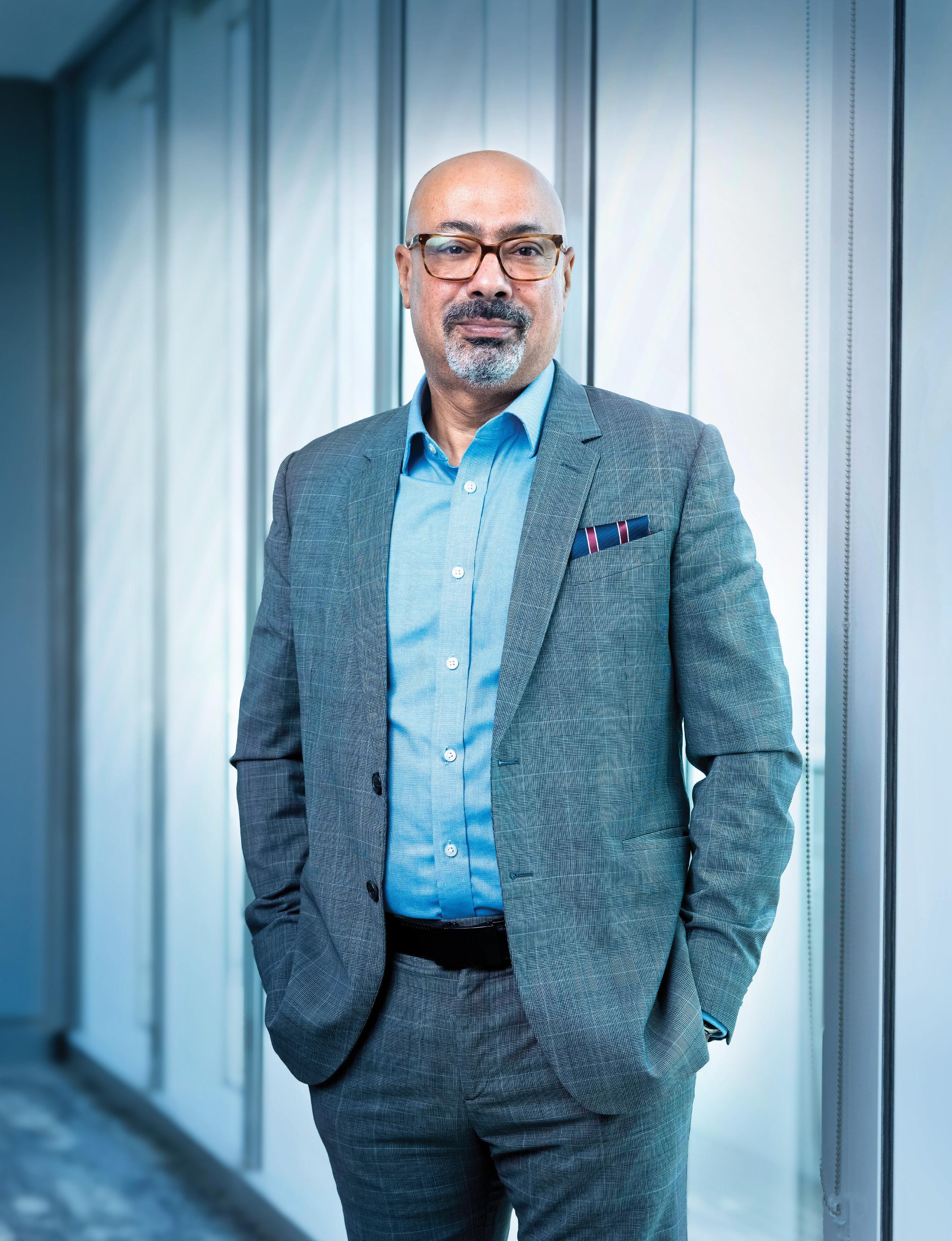

P.28 SAUDI SUMMIT SHOWCASE: Highlights of our inaugural event in Saudi Arabia
P.46 THE WIO WAY: CEO Jayesh Patel on how the neobank is disrupting traditional banking

HATEM DOWIDAR’S STRATEGY TO TRANSFORM e & INTO A GLOBAL POWERHOUSE
GULF BUSINESS AWARDS 2025 HERE’S WHO MADE IT TO OUR HONOUR LIST THIS YEAR P.36




CONTENTS / OCTOBER 2025
An insight into the news and trends shaping the region with perceptive commentary and analysis
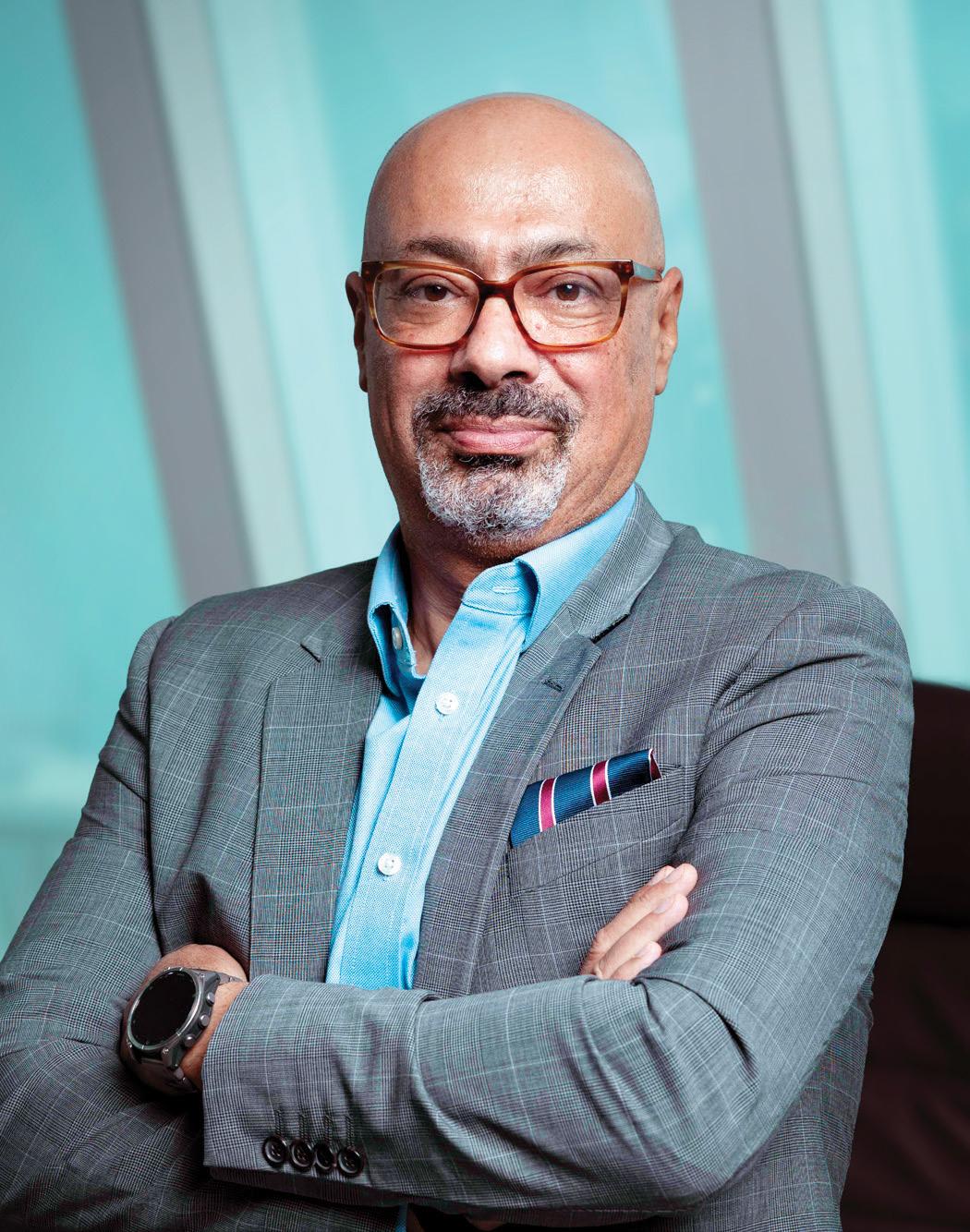

We shine the spotlight on e&, led by GCEO Hatem Dowidar, and its transformation from a traditional telco into a tech-focused giant, driving innovation, digital growth and global expansion
Our flagship awards celebrated the region’s most dynamic companies and business leaders
Editor-in-chief Obaid Humaid Al Tayer | Managing partner and group editor Ian Fairservice
Chief commercial officer Anthony Milne anthony@motivate.ae
Publisher Manish Chopra manish.chopra@motivate.ae
Group editor Gareth van Zyl Gareth.Vanzyl@motivate.ae
Editor Neesha Salian neesha.salian@motivate.ae
Deputy editor Rajiv Pillai Rajiv.Pillai@motivate.ae
Reporter Nida Sohail Nida.Sohail@motivate.ae
Senior art director Freddie N Colinares freddie@motivate.ae

General manager – production S Sunil Kumar Production manager Binu Purandaran Assistant Production Manager Venita Pinto
Digital sales director Mario Saaiby mario.saaiby@motivate.ae
Sales manager Hitesh Kumar Hitesh.Kumar@motivate.ae
HEAD OFFICE: Media One Tower, Dubai Media City, PO Box 2331, Dubai, UAE, Tel: +971 4 427 3000, Fax: +971 4 428 2260, motivate@motivate.ae DUBAI MEDIA CITY: SD 2-94, 2nd Floor, Building 2, Dubai, UAE, Tel: +971 4 390 3550, Fax: +971 4 390 4845 ABU DHABI: PO Box 43072, UAE, Tel: +971 2 657 3490, Fax: +971 2 677 0124, motivate-adh@motivate.ae SAUDI ARABIA: Regus Offices No. 455 - 456, 4th Floor, Hamad Tower, King Fahad Road, Al Olaya, Riyadh, KSA, Tel: +966 11 834 3595 / +966 11 834 3596, motivate@motivate.ae LONDON: Acre House, 11/15 William Road, London NW1 3ER, UK, motivateuk@motivate.ae

50 and counting: Luxury footwear brand Santoni marks its 50th anniversary this year. CEO Giuseppe Santoni talks milestones, expansion and more p.54

Quiet luxury: Peserico, the Italian fashion brand known for its timeless elegance and sartorial craftsmanship, is making its presence felt in Dubai p.59
“Dubai’s vision, guided by the leadership of HH Sheikh Mohammed bin Rashid Al Maktoum, Vice President and Prime Minister of the UAE and Ruler of Dubai, has always been to shape the future of finance. The recognition [among the world’s top four cities for fintech] in the latest Global Financial Centres Index reaffirms the emirate’s position as a global force in fintech and the wider financial services sector.”
Essa Kazim, governor of DIFC



Email: info@britishchamberdubai.com
Website: britishchamberdubai.com
LinkedIn: /british-chamber-dubai
Instagram: @bccdubai
X: @BCCDonline
The British Chamber of Commerce Dubai is a membership organisation that supports companies and individuals from the UK with existing business interests in the region and those new to the UAE.
Our membership consists of British-owned, Dubai and RAK-based companies, UK registered organisations, UK passport holders and brands that support British business.
Through a considered and strategic calendar of events, the BCCD ensures high-quality networking opportunities, market knowledge sharing, valuable engagement opportunities and exclusive experiences for our members.
The BCCD provides an ecosystem that goes beyond Dubai, to the wider GCC and through the British Chambers of Commerce’s Global Business Network reaching and providing international exposure and opportunities for our members and stakeholders.
For more information, please contact the BCCD Business Team: info@britishchamberdubai.com
Founding Sponsors Annual Partners




















GULF BUSINESS LIFETIME ACHIEVEMENT AWARD
Gerald Lawless
LEADER AWARDS
BANKING LEADER OF THE YEAR
Rola Abu Manneh CEO, UAE, Middle East and Pakistan, Standard Chartered
ENERGY LEADER OF THE YEAR

Rasso Bartenschlager General Manager, Al Masaood Power


HEALTHCARE LEADER OF THE YEAR
Dr. Craig R. Cook
CEO, The Brain & Performance Centre, a DP World company

HOSPITALITY LEADER OF THE YEAR
Joe Nassoura General Manager, Fairmont Dubai



INVESTMENT LEADER OF THE YEAR
Bal Krishen Rathore Chairman, Century Financial Group
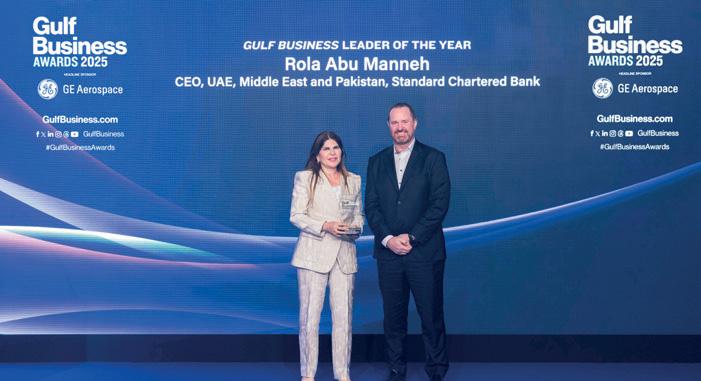
GULF BUSINESS LEADER OF THE YEAR
Rola Abu Manneh CEO, UAE, Middle East and Pakistan, Standard Chartered Bank
COMPANY AWARDS
BANKING COMPANY OF THE YEAR RAKBANK
ENERGY COMPANY OF THE YEAR
GE Vernova
HEALTHCARE COMPANY OF THE YEAR

LOGISTICS LEADER OF THE YEAR
Tarek Sultan Chairman, Agility Global


REAL ESTATE LEADER OF THE YEAR
Yousuf Fakhruddin CEO, Fakhruddin Properties

RETAIL LEADER OF THE YEAR
John Hadden CEO, Alshaya Group


TECHNOLOGY LEADER OF THE YEAR
Andreas Hassellöf Founder and CEO, Ombori

TOURISM LEADER OF THE YEAR
Mohamed Abdalla Al Zaabi Group CEO, Miral Group
TRANSPORT LEADER OF THE YEAR
Aster DM Healthcare
HOSPITALITY COMPANY OF THE YEAR
FIVE Hotels and Resorts
INVESTMENT COMPANY OF THE YEAR
AIX Investment Group
LOGISTICS COMPANY OF THE YEAR
AD Ports Group
REAL ESTATE COMPANY OF THE YEAR


Adel Mardini CEO, Jetex
Refad Real Estate Investment and Development Company
RETAIL COMPANY OF THE YEAR
Dubai Duty Free



TECHNOLOGY COMPANY OF THE YEAR
Crowe Mak
TOURISM COMPANY OF THE YEAR Miral Group
TRANSPORT COMPANY OF THE YEAR
Thrifty Car Rental


GULF BUSINESS COMPANY OF THE YEAR Miral Group
EDITOR’S CHOICE COMPANY AWARDS
DIGITAL TRANSFORMATION COMPANY OF THE YEAR

Etihad Salam Telecom Company
FINTECH PROVIDER OF THE YEAR OKX
MICE PROVIDER OF THE YEAR
Tahaluf
EDITOR’S CHOICE LEADER AWARDS
LEGACY IN LEADERSHIP
Masih Imtiaz CEO, Imtiaz Developments
CROSS-BORDER BUSINESS ICON OF THE YEAR
Capt. Pradeep Singh CEO and Founder, Karma Realty Developers
DISRUPTIVE LEADER OF THE YEAR
Dr Ali Asgar Fakhruddin CEO, Sterling Group


SEE THE EVENT COVERAGE





VISIONARY LEADER OF THE YEAR
Ankur Aggarwal Chairman and Founder, BNW Developments



WOMAN LEADER OF THE YEAR

Mila Semeshkina CEO and Founder, WE Convention


DISRUPTIVE COMPANY OF THE YEAR



Ultima Chain



FAMILY BUSINESS OF THE YEAR



Al Khayyat Investments (AKI)











Tesla’s $8.5tn ambition hinges on humanoid robots, robotaxis, investor faith, and Musk’s ability to deliver on steep milestones
How can Tesla become an $8.5tn company? That’s the market valuation the electric vehicle maker would have to reach to justify CEO Elon Musk’s new pay package announced in Septmber.
Selling 100 million humanoid robots in a year could do it; creating a robotaxi network with more than 10 times the revenue of Uber might as well. And of course, investor hope is part of the equation.
Musk was given a decade to expand Tesla’s $1tn valuation into a company worth more than the combined current value of Nvidia and Microsoft, the two most valuable publicly traded companies in the world. If he succeeds, Musk, already the
best-paid CEO in the world, would receive a trillion-dollar pay package.
Musk’s new pay package was granted on September 3, but it is subject to shareholder approval in November. The board showed how and where it expects Tesla to make its money by structuring Musk’s pay package around 12 milestones that are primarily based on products and profit, as well as market capitalisation. They target enormous increases in profit as Tesla rolls out its Optimus humanoid robots and a robotaxi fleet that it hopes will be more efficient than human-driven rivals.
A lot depends on how investors value the company. Tesla, for example, is valued as a growth stock,
trading at around 75 times its earnings before interest, taxes, depreciation and amortisation, or EBITDA, even though its vehicle sales dropped last year and are likely to drop this year.
The payoff is astounding – and so are the goals. Gene Munster, managing partner at Deepwater Asset Management, broadly estimated that robotaxis and self-driving software could be worth a tillion dollars of market cap each, with cars another half a trillion. “At the end of the day, the reason why this is going to work or not work really comes down to Optimus,” he said. “It’s a fairy tale, but it’s one that could actually happen.”
Musk has been betting the company on self-driving software and robotaxis for some time. Tesla currently has a small fleet of robotaxis - estimated to be about three dozen vehicles - in a part of Austin, Texas. An early Musk milestone is to have a million robotaxis in operation.
One of Tesla’s biggest fans, ARK Invest, predicted an even sunnier case well before the Musk pay package was announced. They see Tesla’s market capitalisation hitting $7tn to $10.9tn in 2029, with a Tesla robotaxi network bringing in between $603bn and $951bn of ride-hail revenue per year. Global ridehailing leader Uber, by comparison, will have revenue of $52bn this year, according to LSEG.
Tesla would start off owning and operating a robotaxi network, which would eventually be taken on by another company, ARK forecast. Tesla’s share of the ride fare would be 40-60 per cent, double that of Uber, ARK said. ARK did not include a valuation for robots in its model, although it said that could become a $24tn market.
More recently, Musk has described robots as the future, saying the Optimus humanoid robot could account for 80 per cent of Tesla’s value eventually.
If Tesla’s future depends on Optimus, it will have to sell a lot of robots – maybe more than 100 million a year, according to Reuters calculations. If Tesla’s business was only robots, that 100 million figure is what it would take to hit the top EBITDA profit target, as specified in the Musk pay package, of $400bn. Optimus is expected to be priced at around
MORE RECENTLY, MUSK HAS DESCRIBED ROBOTS AS THE FUTURE, SAYING ROBOT COULD ACCOUNT FOR 80 PER CENT OF TESLA’S VALUE EVENTUALLY
$25,000 and Tesla’s current EBITDA profit margin is around 15 per cent. For twice the profit margin, Tesla would have to sell only half as many robots.
EBITDA this year is expected to be $13bn, according to LSEG, so Tesla has a long way to go.
Much will also depend on how investors calculate Tesla’s potential at the end of the decade-long pay package. If investors were to continue pricing Tesla at 75 times EBITDA, it would take $113bn in EBITDA for Tesla to reach a $8.5tn valuation, or less than the profit goal Tesla has set in Musk’s pay package. That package has a top EBITDA of $400bn and a top market cap of $8.5tn, a multiple of 21.
ONE OF TESLA’S BIGGEST FANS, ARK INVEST, PREDICTED AN EVEN SUNNIER CASE WELL BEFORE THE MUSK PAY PACKAGE WAS ANNOUNCED. THEY SEE TESLA’S MARKET CAPITALISATION HITTING $7TN TO $10.9TN IN 2029, WITH A TESLA ROBOTAXI NETWORK BRINGING IN BETWEEN $603BN AND $951BN OF RIDE-HAIL REVENUE PER YEAR. GLOBAL RIDE-HAILING LEADER UBER, BY COMPARISON, WILL HAVE REVENUE OF $52BN THIS YEAR, ACCORDING TO LSEG.
The $400bn target was “materially more aggressive” than Morgan Stanley’s predictions on Tesla’s auto, energy and robotaxi businesses, its analysts said in a note on Sunday, adding that it “would imply substantial contributions from Optimus and other AI robot end markets currently not in our forecasts.”
Some investors welcomed the focus on the new products and said the proposed pay might help address what is ailing the company now.
“There are big operational hurdles that Tesla does need to accomplish,” said Will Rhind, CEO of global ETF issuer GraniteShares. “There are things that clearly need to be reversed, such as declining sales, et cetera. So, why not tie the CEO’s compensation to reversing some of those trends?”
Reuters
In China, business success depends on understanding cultural nuances like relationships and communication, as misunderstandings can easily derail deals

China is the market everyone wants to crack – but not everyone knows how. For Gulf executives, the stakes are especially high. China is already a top energy partner for the Middle East, its companies are global leaders in technology and infrastructure, and its vast consumer market is hungry for new ideas, products, and partnerships.
Yet, time and again, deals stumble not because of the numbers but because of misunderstandings – of culture, hierarchy, or communication style. Many executives from the Gulf have privately admitted that what looked like a “yes” in Beijing later turned out to
be a “maybe” at best, or that the real decision-maker in a Chinese delegation never actually spoke during the meeting. These are not isolated incidents – they are recurring cultural patterns.
Here’s a cheat-sheet for navigating business in the world’s most dynamic marketplace, with lessons drawn from both Chinese and Gulf experience.
In the Gulf, business thrives on ‘wasta’ — trust networks built on family, reputation, and loyalty. In China, the equivalent is guanxi. Both rely on reciprocity and shared obligations.
• Don’t rush to sign a deal. Just as in the Gulf, it’s the relationship that gets you into the room, not the contract.
• Expect introductions through trusted intermediaries to carry more weight than cold approaches.
Real-world insight: Chinese firms in Saudi Arabia often lean on royal commissions or local families for introductions – without this backing, projects rarely advance smoothly.
Both Gulf Arabs and Chinese are highcontext communicators — meaning much is left unsaid. A polite “yes, inshallah” in the Gulf or “we will consider it” in China can both mean “no”. However, research shows that Arab speakers tend to be more expressive than Chinese, making the non-verbal aspects of communication even more important.
• Pay attention to tone, pauses, or hesitation.
• Confirm understanding in writing, tactfully: “To clarify, shall we follow up next week on this?”
Pitfall: Many Gulf executives mistake a Chinese “yes” as agreement when it is only courtesy. The reverse happens too – Chinese partners can misread Gulf politeness as firm commitment.
Dr Catherine Hua Xiang is the head of East Asian languages and programme director for international relations and Chinese at the London School of Economics, and author of Bridging the Gap: An Introduction to Intercultural Communication with China
Confucian values in China and tribal/family traditions in the Gulf both mean hierarchy matters. Deals are signed at the top, not the middle.
• Always send a delegation that matches your counterpart’s seniority.
• Don’t expect a mid-level Chinese manager to commit without consulting superiors – just as a family adviser in Riyadh may not speak for the patriarch.
Case in point: A Chinese company once delayed a project in the Gulf simply because they weren’t sure “who was really in charge” – a ministry, a family conglomerate, or a royal commission. Mapping decisionmaking structures is essential on both sides.
Whether it’s a Beijing banquet or a majlis in Abu Dhabi, business talk is often secondary to ritual and hospitality.
• Present your business card with both hands, ideally with one side in Chinese.
• Don’t push business at a Chinese dinner; rapportbuilding is the real agenda.
• Equally, don’t underestimate the importance of coffee, dates, and long conversations in Gulf hospitality.
Both Gulf and Chinese partners care deeply about dignity. Causing someone to “lose face” in China or “lose honour” in the Gulf can derail years of effort.
• Never openly contradict or embarrass a counterpart.
• Critique privately and soften refusals with lternative suggestions.
• Praise in public whenever possible.
Example: A Gulf investor once publicly questioned a Chinese manager’s production figures during a meeting. The manager felt humiliated in front of his staff – cooperation cooled quickly afterward.
6
Negotiations in China can feel slow and circular, while Gulf negotiators are known for being competitive and occasionally dramatic to show resolve. The result can be mismatched expectations.
• Expect multiple rounds in China – patience is seen as commitment.
• Avoid raising your voice or showing frustration, which may be tolerated in Gulf bargaining but is seen as a loss of self-control in China.
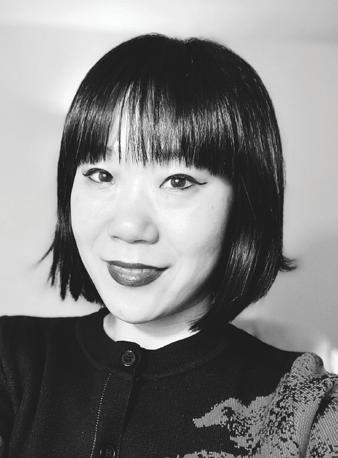
• Contracts in China are “living documents” tied to the relationship. Build in review mechanisms rather than expecting terms to be frozen forever.
Details carry weight. Colours, symbols, and timing can affect impressions.
• Red is auspicious in China; avoid gifting clocks or umbrellas.
• In the Gulf, never offer alcohol; instead, gifts of dates or handicrafts are welcome.
• Respect local calendars: Ramadan in the Gulf and Chinese New Year in China both slow down formal business but open opportunities for cultural connection.
Neither Gulf nor Chinese executives think in quarters. Both think in generational horizons — be it sovereign wealth or ‘Belt and Road’.
• Frame proposals as long-term partnerships, not short-term wins.
• Emphasise sustainability, shared growth, and trust.
Doing business in China is not about memorising a list of dos and don’ts. It’s about mindset: patience, humility, and cultural intelligence. For Gulf executives, there is good news: you already understand the importance of trust, honour, and long-term vision – values that resonate powerfully in China.
As China and the Middle East deepen ties in energy, infrastructure, and technology, those who invest in understanding will move faster and further than those who don’t. Deals will follow, but respect comes first.
• Build trust before pushing for contracts.
• Present business cards with both hands.
• Match delegation seniority.
• Praise in public, correct in private.
• Think long-term, not short-term.
DON’T:
• Rush negotiations.
• Force people into saying “no.”
• Dismiss rituals like banquets or card exchanges.
• Cause someone to lose face in front of others.
• Treat China as just another “big market” – it is a cultural world of its own.

The Middle East is pouring billions into AI and data centres, but without communication, empathy, and conflict-resolution skills, progress risks stalling.
We often talk about artificial intelligence (AI) and the human element in terms of job displacement, ethics, or employee augmentation. Or we focus on how AI use cases should be driven by real needs rather than shiny object syndrome. Yet, there’s a missing piece in these conversations. Often overlooked are the human skills behind the scenes, particularly among the IT teams quietly powering this transformation.
Why does this matter more than ever? Because across the region, AI initiatives are accelerating at pace. In recent months alone, headlines have heralded multi-billion-dollar investments and landmark joint ventures. From AI research hubs to sprawling data centre builds, the Middle East is laying the groundwork for a tech-driven future. But amid all
this momentum, it’s equally important to consider the human capability required to ensure these efforts deliver real value. All the advanced infrastructure, algorithms, and analytics tools in the world won’t amount to much if the people managing them can’t communicate clearly, build trust, or navigate challenges.
Whether you’re a startup scaling fast, a small or mediumsized business modernising operations, or a large enterprise undergoing digital transformation, your success with AI will depend as much, or more, on people, as it does on platforms. Take, for instance, a company deploying AI-powered customer tools. If the IT team can’t articulate the system’s value in plain terms, anticipate concerns, or respond thoughtfully to pushback, the rollout is likely to stall. Similarly, during a security incident, AI tools might rapidly detect the breach; however, clear updates, calm leadership, and the ability to align different stakeholders under pressure will play an equally important role in impact containment.
This is why three foundational soft skills must be prioritised alongside technical training. These aren’t secondary skills or nice-to-haves. They’re essential capabilities that enable human-centred transformation, helping turn innovation into impact.
In a region where digital literacy varies widely across industries and roles, clear communication is not only helpful, it’s critical. Tech professionals must be able to bridge the gap between technical accuracy and accessible language, adapting their style to the needs of nontechnical colleagues without compromising on clarity. Misunderstandings are often the result of assumptions, not incompetence. A developer might walk through a dashboard using layers of acronyms and jargon, unintentionally alienating colleagues who need the context explained in more familiar terms.
Effective communicators adjust their tone and delivery based on who they’re speaking to and the situation at hand. In a diverse region such as the Middle East, where teams often span languages,
cultures, and work styles, this includes being sensitive to nonverbal cues, levels of formality, and cultural nuance. Communication isn’t entirely about having the right answers; it’s also about making sure those answers land.
Another example where clear communication and logical thinking are required is the use of generative AI (GenAI) prompts. When prompting a GenAI large language model, the prompt should use precise language with logical cohesion to return a result that is useful and informative, similar to how an SQL query requires well-considered ‘JOIN’ and ‘WHERE’ clauses. In these situations, the ideal approach is to carefully evaluate how to best inform the AI of the results you want, which requires the key soft skills of critical thinking and wordcraft.
Imagine if the great Arab poet Al-Mutanabbi, in his Ode to Sayf al-Dawla asked a GenAI programme to create an image from this line, but instead of “teeth”, used “mouth”:
If you see the lion bare his teeth, do not think the lion is smiling.
With less precise language, it was highly likely for AI to return an image of a lion roaring, or licking its paw, or simply panting in the heat. Because of imprecise language, AI must make its own assumptions, which can often miss the mark.
While AI is intended to enhance productivity and outcomes, it often introduces disruption, which can make people uneasy. Empathy helps leaders and IT professionals understand this emotional response and support people through change. Sometimes, this means acknowledging frustration during a tricky rollout or taking the time to listen to feedback without becoming defensive. These small gestures build confidence and engagement over time, making future change easier to manage.
Empathy becomes all the more important when roles are affected by automation or digital shifts. If someone is worried their responsibilities will shrink or disappear, telling them to “embrace the future” won’t help. What does help is open dialogue, reassurance, and support in developing new skills. People are more likely to trust the technology when they trust the intent behind it, and trust is built on empathy.
Every digital project, no matter how well planned,
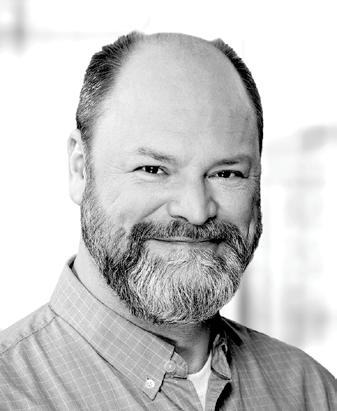
Kevin Kline is the technical evangelist, databases at SolarWinds
will encounter friction. Misaligned expectations, evolving requirements, or communication breakdowns can all lead to conflict. The key difference between a minor setback and a major derailment is how the conflict is handled. Yet many technically minded professionals are more comfortable solving code-level problems than engaging with emotionally charged conversations.
Conflict resolution, like any skill, can be developed. It starts with self-awareness, a willingness to listen, and a focus on shared outcomes, not individual frustrations. In Middle Eastern work cultures, where hierarchy and indirectness can influence how feedback is given and received, this also means applying emotional intelligence and cultural sensitivity to tough conversations. Whether it’s choosing the right moment, softening the tone, or involving a mediator, the goal is always the same: to move forward with mutual respect and clear direction.
So, how can organisations start embedding these vital skills in their workforce? The first step is treating soft skills as core competencies, not extras. They should be woven into training programmes, onboarding processes, and ongoing learning initiatives. Role-playing scenarios, mentoring, and peer feedback are practical ways to encourage this growth without needing extravagant resources.
Equally important is the role of leadership. When senior IT and business leaders model calm communication, active listening, and thoughtful conflict management, they set a tone for the rest of the team to follow. Culture change doesn’t happen overnight, but it starts with what’s valued and rewarded. If interpersonal skills are never considered during reviews or promotions, they’ll always take a back seat. It’s time to recognise the professionals who not only build great systems but also build trust and collaboration within their teams.
The Middle East’s AI investments, from hyperscale data centres to national AI strategies, are bold and visionary. But these initiatives will only be as effective as the people entrusted with bringing them to life. Technology, after all, is only a tool. Its real impact depends on how it’s used and by whom.
Soft skills may not feature in news headlines or line items on procurement budgets, but they’re what turn potential into performance. In an era of smart machines and smarter infrastructure, it’s the human layer that will determine whether the region’s AI ambitions truly deliver on their promise.

Dubai’s success in real estate tokenisation is driven by proactive regulatory sponsorship, robust infrastructure, strategic planning, and strong public-private collaboration
As blockchain technology matures, the focus is shifting from speculation to real utility. Real-world asset tokenisation is central to this shift, offering the potential to radically improve how assets are issued, traded, and settled through greater transparency, efficiency, and liquidity.
At Ripple, we view tokenisation as one of the most powerful drivers of real-world blockchain adoption, with the potential to profoundly change the way global financial markets operate in the future. Our recent report with BCG projects the tokenised asset market to grow from $0.6tn today to a staggering $18.9tn by 2033. But to get there, we need more than technology. We need clarity and trust.
Despite strong interest, tokenised assets still represent a fraction of traditional financial markets, largely due to legal and operational uncertainties. That’s why the Dubai Land Department (DLD)’s real estate tokenisation pilot, delivered in collaboration with the Virtual Assets Regulatory Authority (VARA), marks such a breakthrough. By pioneering an on-chain title deed registry, the DLD has lowered entry barriers for investors and enabled innovators like Ctrl Alt and Prypco to reimagine real estate investment on public

blockchains like the XRP Ledger (XRPL). The market response speaks for itself: the second property sold out in under two minutes.
Tokenisation has not been without its challenges. The core challenge is legal: a token cannot unlock its full value unless it clearly confers immutable rights that are recognised by law. Most tokenisation efforts to date sidestep this by mirroring off-chain financial instruments – bonds, money market funds, treasuries – on blockchain, rather than embedding legal rights directly into tokens.
This workaround has limitations, especially for tangible real-world assets like real estate. Tokenising a property title deed is only useful if it eliminates the friction of reconciling on-chain tokens with off-chain legal records. Without legal certainty, investors hesitate, and the promise of instant, final transfer of rights remains out of reach.
Operational challenges compound the issue. Any system supporting real-world tokenisation must balance open participation with compliance requirements, especially anti-money laundering (AML) and
know your customer (KYC) rules. Ensuring efficient distribution, secondary market liquidity, and investor trust are all core issues that depend on robust infrastructure and regulatory buy-in.
Dubai’s real estate tokenisation pilot has been a turning point because it tackles these issues head-on. The DLD created a legally recognised, on-chain property title, eliminating the need for an off-chain deed. This simplifies ownership transfers and makes fractional real estate investment more accessible.
With close collaboration by the regulator VARA, foresight by DLD and private sector innovation from Ctrl Alt and Prypco, the pilot represents a full-stack effort. It enables real estate investment from as little as Dhs2,000, drawing in a new class of investors and injecting fresh value into the real estate sector. And building on the XRPL, a permissionless blockchain with infrastructure for permissioned domains, uniquely allows both broad market access and strong compliance controls.
Dubai’s approach is truly pioneering. Under this umbrella of regulatory clarity, many projects previously considered difficult to achieve are closer to becoming an attainable reality. And it is one of the few global jurisdictions where a pilot like this could take off in the way it has, thanks to detailed planning, the Dubai Government’s strategic foresight about crypto’s potential and progressive regulation that are now yielding rewards. There are four key lessons that other policymakers and innovators can take from this pilot:
01 Regulatory sponsorship is paramount Innovation isn’t just a private-sector function. Just as technology continues to innovate, regulators must also evolve in their approach. The DLD and VARA went beyond permitting tokenisation; they helped shape it, resolving key legal questions about title and ownership. That kind of clarity builds trust, and trust is the bedrock of adoption. With this model, Dubai shows that a proactive, innovative
DUBAI’S APPROACH IS TRULY PIONEERING. UNDER THIS UMBRELLA OF REGULATORY CLARITY, MANY PROJECTS PREVIOUSLY CONSIDERED DIFFICULT TO ACHIEVE ARE CLOSER TO BECOMING AN ATTAINABLE REALITY.
and well-regulated approach can enhance both market stability and consumer welfare.
02 Infrastructure matters
Ctrl Alt leveraged Ripple’s banking-grade custody solution to assist Ctrl Alt in meeting VARA’s requirements. Furthermore, by issuing tokens on the XRPL, the pilot leveraged the wider pool of liquidity that comes with a permissionless ledger, while still allowing for permissioned protocols, facilitating built-in compliance. These infrastructure fundamentals are a must for building trust and judging by the recordbreaking uptake in the last release, consumers recognise that.
The pilot was the product of extensive preparation, both technically and legally. There were countless reasons it might never have taken off, but the effort put into mitigating the majority of associated risks before the pilot›s launch was key to its successful debut. With real estate in particular, a level of professional property management must exist to realise yield and maintain upkeep, regardless of the property›s ownership structure. This was clearly addressed during the pilot›s launch. The tokens were integrated into DLD’s existing traditional ownership systems, ensuring a seamless experience that removed friction for users.
The partnership between DLD and VARA shows what’s possible when government entities align. The same principle applies to public-private sector collaboration. Coordination across sectors and a willingness to work through legal and operational complexity together is what truly sets successful markets apart, accelerating innovation and adoption in this transformative space.
Dubai’s pilot doesn’t solve every challenge, but it offers a compelling template that other jurisdictions can study and build upon. As more asset classes –from real estate to equities – explore tokenisation, the demand for regulatory clarity and robust infrastructure will only grow. Dubai has shown how to lead from the front. The question now is: who will follow?

From geopolitical shocks to regulatory shifts, Raymond Kairouz, GM of UAE at Chedid Re, explains how resilience means staying power, not short-term playbooks
For an industry built on guaranteeing resilience, its own has been put to the test repeatedly, severely, and differently in nearly every global market. From geopolitical instability to inflationary pressures to regulatory growing pains, there have been plenty of reasons and motives to retreat from (re)insurance – in the region as much as elsewhere. Where others did just that, we consolidated and doubled down.
Markets defined by volatility demand a long-term playbook that is invested in their continuity, grounded in regulatory agility, and enabled by portfolio versatility. Over the last decade, many reinsurance players in the region have responded in kind to boom-bust cycles; they would enter, exit, and re-enter, largely placing sentiment over strategy. This short-termism has created gaps in local service delivery and, sometimes, even put regulatory trust at stake. Operating across different political, economic, and sociocultural landscapes requires a level of commitment that cannot be outsourced or short-lived. It’s why we invest in people and platforms, but most importantly, presence.
Chedid Re’s timeline of staying power is proof that resilience is as much about timing and trust as it is about capital or compliance. With each expansionary move, our goal has remained clear and become clearer: establish early, operate locally, and stay long enough to scale responsibly. In the UAE, where we’ve
planted deep roots since 2007 and launched our DIFC subsidiary in 2024, our focus has been on cross-border innovation, collaboration, and expansion. In Saudi Arabia, where we established our office in 2010 and then our regional headquarters in 2023, we’ve built on a different kind of momentum, led by vision first, volume potential next.
The truth is, where market nuances and dynamics come into play, there is not one single definition of resilience. In one market, it looks like cautious and conservative growth. In another, it’s about simply standing your ground. And in others, it’s about scaling fast and furious. From our vantage point, with exposure to nearly every kind of operating climate across Europe, the Middle East, Africa, and parts of Asia, it’s clear that resilience is becoming more situational and less static.
This realisation, tough as it is, requires the local expertise to predict and experience to preempt. Our local teams have consistently identified regulatory shifts, anticipated compliance developments, and flagged emerging risks ahead of the market. Rather than ‘plugand-play’ models exported from headquarters, we’ve adapted our brokerage and claims strategies to market-level risk understanding – whether that’s political upheaval, energy exposure, or foreign exchange volatility. This means, for instance, reengineering placement strategies at speed, or retaining
underwriting capacity through policy structures that can help mitigate currency swings. And it most certainly, almost always, means clearing licensing hurdles and reshaping how coverage is placed to comply with local rules.
The ability to operate compliantly and grow competitively is often overlooked and understated in our industry. Our network in more than 85 countries is supported by a governance model aligned with international best practices and regional nuances. This depth of regulatory understanding is what sets us apart in markets like the UAE, where we’re fully licensed under the DFSA, one of the region’s most stringent and forwardlooking frameworks. It’s also why we’ve strengthened our boards and leadership teams with experienced advisors and industry veterans, reinforcing our compliance and governance frameworks across jurisdictions. But you don’t last long here only by mastering reinsurance and regulations. You do it by also understanding risk and boardroom priorities in every sector you secure. What audit committees need. How corporates think about capital adequacy. Where shareholders see exposure. Resilience for any reinsurance broker today is about knowing everyone else’s business as well as they do their own. In practical terms, this means advising on business continuity, capital efficiency, and regulatory alignment as expertly as we do on coverage gaps.
Now, as we expand and reinforce our presence in new and existing markets, our goal is to build credibility and capacity for the long term. While the same operational DNA that has worked for us in other markets applies – local knowledge, governance-first approach, and specialised expertise – we know the rules may and will be entirely different in other fast-growing but complex regions. We’ll bring the lessons of the past two-plus decades, but never the same strategy or playbook.
Sometimes, the opportunity lies in striking while the iron is hot. Other times, it’s about seeing long-term potential in short-term volatility. But it’s always, always about knowing how to stay there once you’re there. That’s the heart of resilience. And that’s our commitment to our clients, our partners, and our markets.

OCTOBER 2025
CAMPAIGN SAUDI BRIEFING (RIYADH, KSA) Media & Marketing
FEBRUARY 2026
CAMPAIGN BREAKFAST BRIEFING (DUBAI, UAE) Ramadan Advertising & The Year Ahead
NOVEMBER 2025
CAMPAIGN BREAKFAST BRIEFING (DUBAI, UAE) Out of Home 2026
DECEMBER 2025
CAMPAIGN AGENCY OF THE YEAR MIDDLE EAST AWARDS (DUBAI, UAE)

Regional CISOs turn to ‘vulnerability debt’ to quantify cybersecurity risks in financial terms, helping boards prioritise urgent patches
Software vulnerabilities remain favored paths for threat actors. IBM’s X Force Threat Intelligence Index for 2025 showed that in the previous year, around one in four incidents across critical sectors involved exploited vulnerabilities. IBM’s study is based on a daily tally of 150 billion security events in more than 130 countries including the UAE, where earlier this year the Cyber Security Council alerted the nation to the presence of more than 223,800 domestically hosted vulnerable assets. In its report, the council also raised concerns that half of observed critical vulnerabilities had remained unaddressed for more than five years.
Outdated systems and slow patching cycles leave organisations exposed as new issues are discovered
and legacy ones remain unpatched. Security leaders must balance labour, tools, and budgets to cover an expanding attack surface and an increasingly sophisticated threat landscape. Trying to find all of an organisation’s weak points can be difficult enough, but once flagged, security teams may find they are not getting the support they need to patch even critical vulnerabilities.
In trying to make the case for action, CISOs are starting to rely on the concept of vulnerability debt. Software development teams will often talk about technical debt as the projected cost of future changes resulting from the cheap shortcuts taken today. Vulnerability debt measures the cost of fixing security gaps. But calculating a figure that will be meaningful to decision makers is a challenge.
We must begin with a comprehensive, up-to-date asset list. While tools exist for auto-discovery of IT assets, most CISOs will struggle to reach the necessary level of detail that can lead to an accurate figure for vulnerability debt. We must also consider
that not all debt is the same. Just as payment terms for credit cards vary from those of long-term mortgages, CISOs will have to establish which issues must be addressed immediately and which can be treated as longer-term issues. Such determinations will include assessments that range from high-impact issues that are easy to address versus low-impact issues that are more complex to resolve.
While threat intelligence will be critical, organizations must focus on what impacts their own ecosystem. For example, the US Department of Commerce’s National Institute of Standards and Technology (NIST) is developing a new likely exploited vulnerabilities (LEV) metric that will estimate the probability that a given vulnerability has already been exploited in the real world. But this metric must be taken in the context of likely impact on your organisation.
Once a list of critical issues has been compiled, CISOs must also quantify what work needs to be done to deploy fixes or introduce remediation measures. This will often require coordination with other teams if only to select the least impactful period of downtime.
To get an accurate figure for vulnerability debt, the CISO must also carry out cyber risk quantification (CRQ). This metric combines lump and ongoing costs for each issue with the probability that it is successfully exploited. Of course, probabilities are, by definition, an attempt to quantify uncertainty, which means inaccuracy is unavoidable. Security operations centres work with these uncertainties daily to understand and categorise new vulnerabilities. The imperfections in CRQ and IT asset information may be difficult to eliminate, especially because of the swelling complexity of modern IT environments, but these approaches are still the best way to quantify risk within these environments. Over time, accuracy will improve in all measurements, leading to a greatly improved view of the risk surface.

FINANCE EXECUTIVES MAY BE MORE OPEN TO A MILLION-DIRHAM BUDGET TO FIX A VULNERABILITY ONCE THEY LEARN THAT THEIR INACTION MAY LEAVE THEM OPEN TO REGULATORY PENALTIES IN THE TENS OF MILLIONS.
Hadi
Jaafarawi is the regional VP, Middle East and Africa, Qualys
ONCE A LIST OF CRITICAL ISSUES HAS BEEN COMPILED, CISOS MUST ALSO QUANTIFY WHAT WORK NEEDS TO BE DONE TO DEPLOY FIXES OR INTRODUCE REMEDIATION MEASURES. THIS WILL OFTEN REQUIRE COORDINATION WITH OTHER TEAMS IF ONLY TO SELECT THE LEAST IMPACTFUL PERIOD OF DOWNTIME.
The focus for security leaders must be explaining cyber risk to non-technical audiences through the lens of business cost. Vulnerability debt is a dirham figure. The decision-making audience – the board and senior executives – must be able to view the cyber status quo in terms of disruption to their sphere of responsibility. Overall cash values will be useful but tying critical risks to incidents must include impact on a departmental level. If the story is well told, the CISO will gain allies among management positions who may, for example, become more amenable to downtime for patching. And finance executives may be more open to a milliondirham budget to fix a vulnerability once they learn that their inaction may leave them open to regulatory penalties in the tens of millions.
Vulnerability debt figures are difficult to achieve but pay dividends. Those who must decide whether to invest in patching need numbers if they are to weigh action against inaction. Once they see realworld costs against each path, they will see the wisdom in taking steps towards a stronger security posture. Figures must therefore have enough detail to allow business stakeholders to see the potential risks and what is necessary to address them. When organsational risk is transparent it becomes easier to make arguments for more downtime and more investment, including cyber insurance for risks that are outside the SOC’s control. Vulnerability debt paints the right picture of risk, financial impact, and response capabilities to provide direction for the decision makers who greenlight the necessary actions. As a narrative concept, vulnerability debt is priceless.

Amid 2025’s market volatility and geopolitical tensions, a new strategic allocation framework by Bank of Singapore uses robust optimisation, scenario simulations, and tailored alternatives to build resilient, diversified portfolios
This year has been marked by heightened volatility and deepening uncertainty. With unresolved tariff negotiations and ongoing geopolitical conflicts, markets have responded with sharp fluctuations. In April, the VIX – a key measure of market volatility – spiked to its highest level since the Covid19 pandemic. Since 2022, both equities and bonds have more frequently posted negative returns in tandem, a rare and troubling trend. In this environment, traditional portfolio construction methods are being tested. We believe a new approach is needed – one that embraces uncertainty.
To help our clients build more resilient portfolios, a new strategic asset allocation framework was introduced in July 2025, the result of a year-long study and stress testing of over 120,000 portfolios. It is designed to deliver more stable returns across market
cycles by directly incorporating uncertainty into the portfolio design process.
The new framework introduces three major enhancements that set it apart from traditional approaches: First, we have adopted a technique called robust optimisation, used by institutional investors and quantitative hedge funds. This is the first time an Asian private bank has applied it to strategic asset allocation. Unlike more widely used approaches such as meanvariance optimisation (MVO) or market cap-weighted benchmarks, robust optimisation accounts for uncertainty in expected returns and naturally leads to more

Dr Owi S Ruivivar is the chief portfolio strategist at Bank of Singapore
diversified portfolios – without the need for artificial constraints.
Second, we developed a proprietary simulation engine to test how portfolios perform under a wide range of market scenarios. This engine, built over several months, uses a mix of machine learning and heuristic techniques to guarantee diversity of outcomes and refine portfolio construction. While simulation engines are rarely used in private banking due to their complexity, we saw it as essential to building a framework that is both rigorous and practical.
Third, we also introduced a more tailored approach to alternative investments. Based on client objectives – whether income, capital accumulation, or a mix – we provide detailed recommendations across private equity, private credit, hedge funds, and real assets. While robust optimisation isn’t yet applicable to alternatives due to limited data, we’re monitoring developments closely and are open to integrating it in the future.
This framework reflects a broader shift in investor expectations. Clients today are more sophisticated and seek portfolio-led solutions tailored to their goals, risk appetite, and market outlook. Our approach encourages “portfolio thinking” – evaluating each investment by its contribution to overall portfolio risk and return, rather than in isolation. Relationship managers and investment advisors use the framework to evaluate client portfolios, which are structured into two parts: the anchor and the enhancement. The anchor portfolio – comprising cash, public markets, gold, and alternatives – is the main risk-bearing component, with robust optimisation applied to the public markets segment. The enhancement portfolio allows for more idiosyncratic or concentrated exposures based on client preferences.
Ultimately, our goal is to help our clients think more like institutional investors – embracing diversification, managing risk holistically, and building portfolios that are resilient in the face of uncertainty. With the right tools, data, and expertise, we believe this is the right time to make that shift.
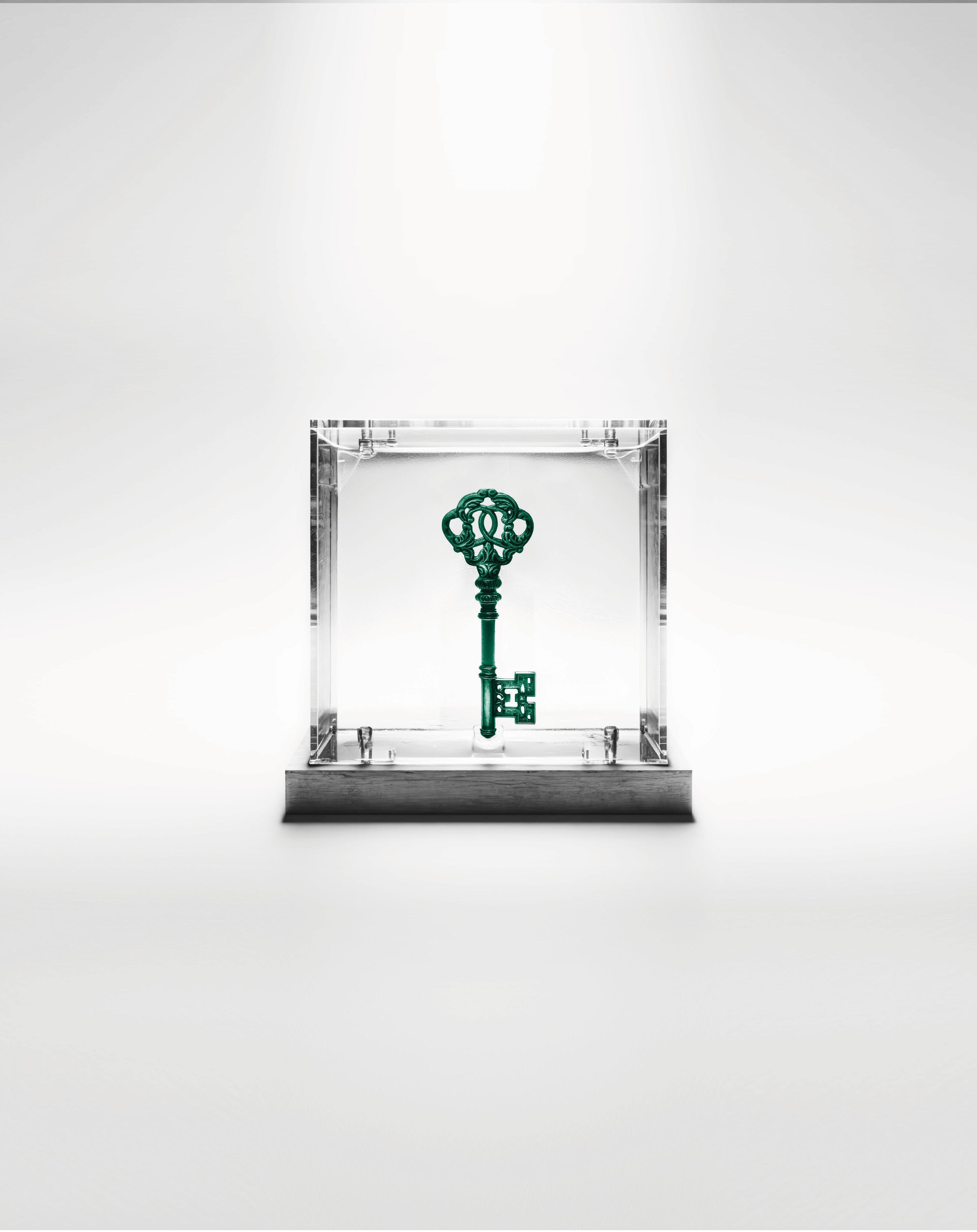
WORDS: NEESHA SALIAN | PHOTOS: MARK MATHEW FROM REINVENTION TO INNOVATION
From transforming a telecom operator into a global technology group, Hatem Dowidar has made e& one of the UAE’s most ambitious players on the global stage. In this conversation, he reflects on the pillars guiding its growth, the balance between innovation and integrity, and what it takes to lead a company through rapid change
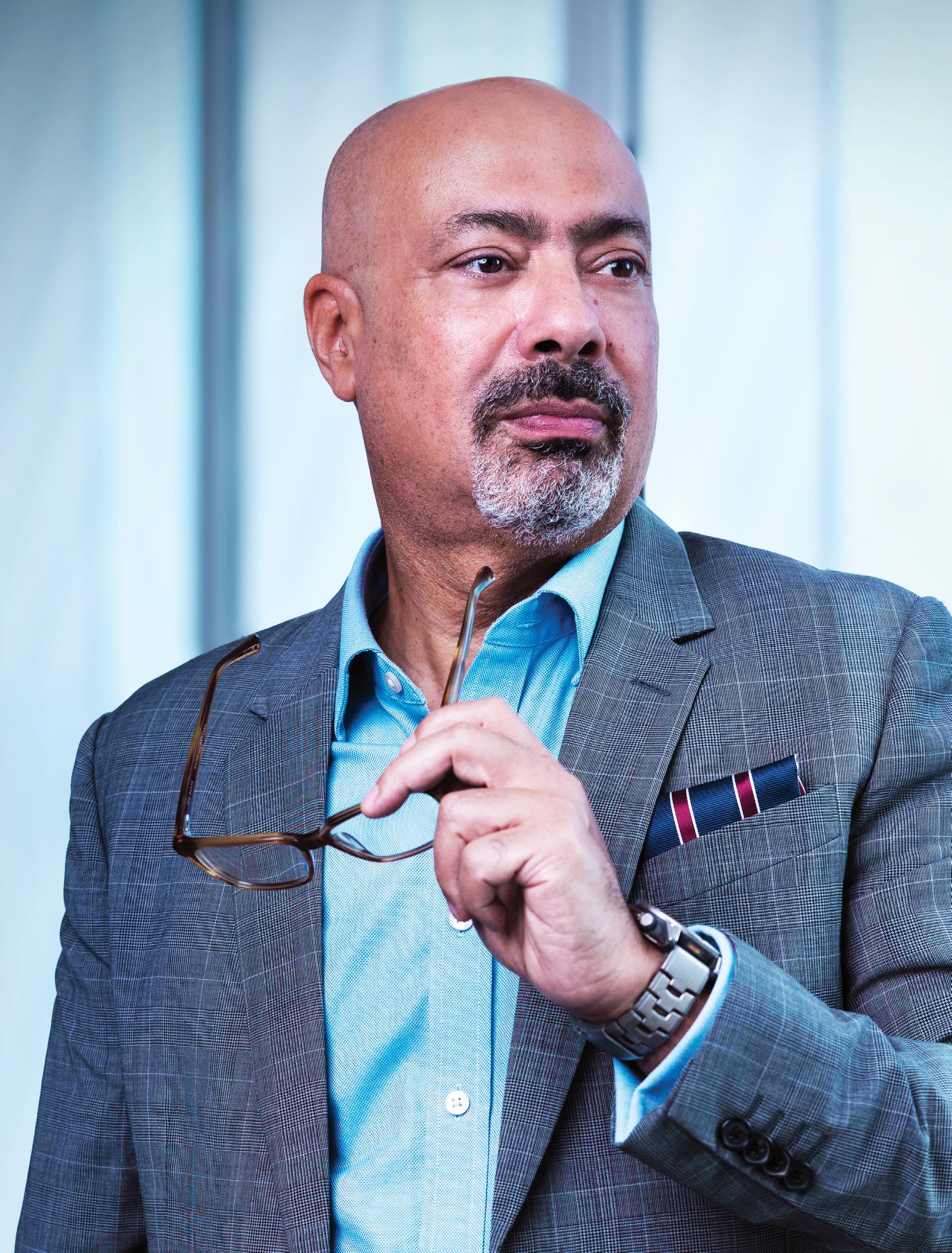
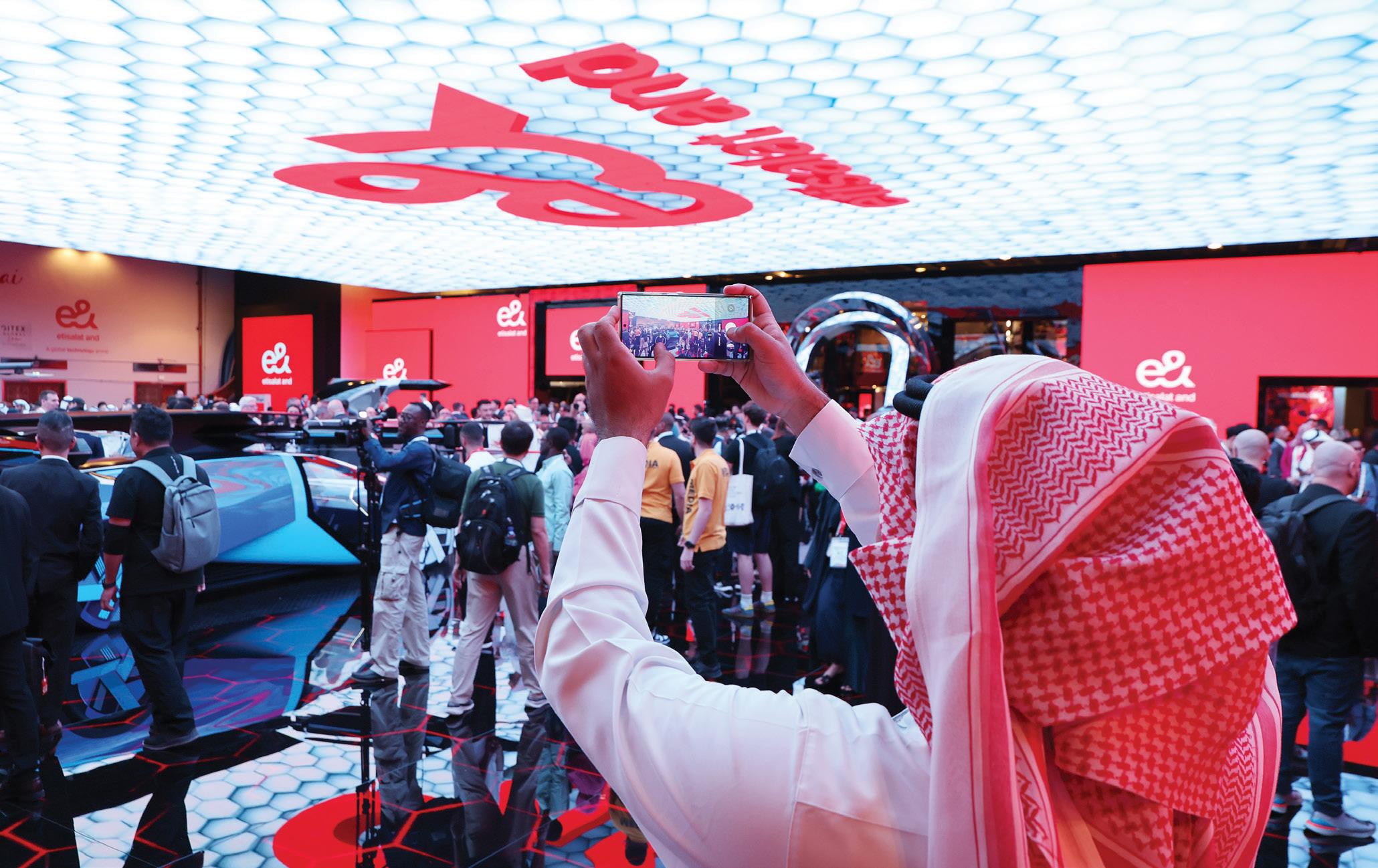
At 10am on a Monday, Dubai’s sun blazes with relentless intensity, mirroring the city’s pulse. From e&’s Al Kifaf headquarters, the city unfolds: Burj Khalifa piercing the sky, the Dubai Metro slicing through the sprawl, and streets alive with motion. Every view reflects Dubai’s ethos: innovation, ambition, action.
Hatem Dowidar, e&’s group CEO, enters his office composed, his presence fronts a strategic mind that has earned him a reputation globally as both a visionary and disruptor. Taking the leadership role in 2020, he launched a bold transformation in 2022, prioritising tech innovation, diversification and global expansion.
“When I became group CEO in 2020, it was clear the traditional telecom model had slowed down globally. With spectrum, infrastructure, and technology demands accelerating, standing still would have meant falling behind. We faced a simple choice: defend the past or redesign the future. We chose reinvention — and set e& on a new path built around growth, innovation, and value creation.”
That reinvention led to the 2022 rebrand from Etisalat to e&, with “Go for More” as a rallying cry. More than a brand positioning, it marked a pivot from traditional telecom to a tech-driven digital leader, now active in 38 countries and serving 198 million customers across AI, fintech, and digital services.
“The rebrand was a cultural shift,” Dowidar says. “It pushed our teams to think beyond telecom and embrace a digital future.” The results followed: in 2023, e&’s portfolio was valued at over $14bn, earning a AAA brand rating. By 2024, it was the Middle East’s fastest-growing tech brand, and in 2025, it claimed the title of ‘World’s Fastest Growing Brand’ with a brand portfolio and investment value exceeding $20bn.
Building on this momentum, e& has made diversification a cornerstone of its strategy. Through e& life, the company has expanded digital lifestyles via platforms like evision, the MENA region’s largest content aggregator. In 2023, evision launched STARZ ON, a free AI-powered streaming service featuring regional, Hollywood, Bollywood, Arabic, French, and sports content. Partnerships such as the deal with Shahid strengthen premium entertainment access. e& also supports esports through collaborations with BLAST Premier and Arena Esports, an esports ecosystem powered by e&.
In fintech, e& money became the UAE’s top app by active users, simplifying payments and expanding global remittances through partnerships like MoneyGram and financial inclusion through its partnership with the Ministry of Human Resources and Emiratisation (MoHRE) to provide wage protection services via the e& money platform. The $400m acquisition of Careem’s Super App in 2023 further extended digital finance, micro-mobility, and app-based lifestyle services across the region.
Meanwhile, e& enterprise delivers solutions in cloud, AI, IoT and cybersecurity,
We faced a simple choice: defend the past or redesign the future. We chose reinvention — and set e& on a new path built around growth, innovation, and value creation.”

highlighted by a $1bn-plus AWS alliance to accelerate regional digital transformation. e& capital invests in startups that redefine industries and shape the future, both regionally and globally.
Every initiative moved the company forward — some through outcomes, others through lessons. “Sometimes the tech adoption curve wasn’t there, or the infrastructure wasn’t ready,” Dowidar says. “In these cases, what’s important to learn is when to push and when to pull back.”
Early fintech ventures highlighted the need for regulatory alignment, while entertainment projects offered insights into user engagement. Across these experiences, e& learned to balance innovation with pragmatism. “Not everything will be bulletproof, and that’s okay. What matters is having the wisdom and foresight to know when to pause, pivot, and channel focus into what’s truly working,” he explains.
Significant milestones include the October 2024 acquisition of a controlling stake in PPF Telecom Group (now e& PPF Telecom Group), expanding operations to 38 countries, and the March 2024 $6bn pledge to enhance connectivity across 16 countries in Africa, Asia, and the Middle East.
Operating in emerging markets presents challenges such as currency swings and inflation, but Dowidar sees these as opportunities to build resilient strategies, diversify revenues, and reinvest in long-term infrastructure. H1 2025 results reflect this: e& reported a 60.7 per cent jump in consolidated net profit to Dhs8.8bn, while expansion continued with the opening of e& Wholesale Americas in Miami.
Making the decision to diversify and pivot is treated strategically, says Dowidar, explaining that every decision at e& is measured against four questions: Does it strengthen the connectivity core? Does it accelerate digitalisation? Does it diversify the portfolio? Does it advance sustainability?
He explains: “This framework keeps us disciplined and ensures we’re building long-term value.”
Through this lens, every initiative is evaluated not just for immediate returns but for its contribution to a resilient, diversified, and sustainable digital ecosystem.
The UAE sovereign cloud partnership with AWS exemplifies this approach, supporting public sector digital transformation while reinforcing e&’s core capabilities. Similarly, the edge network partnership with Qualcomm integrates innovation, connectivity, and digitalisation, while collaborating with IBM to launch an AI Governance Platform and various AI-focused MoUs further advance e&’s role as a tech-driven enabler across industries.
These moves, along with a growing stake in the UK telecom sector via Vodafone, demonstrate e&’s commitment to disciplined, future-focused expansion — investments that are measured not just by immediate returns but by their ability to reinforce the company’s strategic pillars.
Early investments in 5G allowed e& to lead in advanced technologies like network slicing and edge computing. Looking ahead, the company is preparing for quantum risks to encryption. Partnerships with Microsoft and the acquisition of GlassHouse further embed AI and cloud capabilities across e&’s portfolio.
“Technology moves faster than any of us, but if your teams can’t keep up, innovation dies on the vine and you’ll burn out before you scale,” Dowidar notes. To address this, e& has launched the AI Academy and AI Graduate Programme, along with experiential initiatives like Excelerate&, giving teams hands-on exposure at Ericsson’s headquarters in Sweden. By cultivating internal talent, e& ensures innovation scales sustainably without over-reliance on external hires.

THE $400M ACQUISITION OF CAREEM’S SUPER APP IN 2023 FURTHER EXTENDED DIGITAL FINANCE, MICRO-MOBILITY, AND APP-BASED LIFESTYLE SERVICES ACROSS THE REGION
However, large-scale digital transformation, Dowidar emphasises, cannot happen in isolation. Partnerships with governments allow scale, whether through sovereign cloud infrastructure, smart city platforms, or digital inclusion initiatives. The UAE sovereign cloud with AWS, which is endorsed by UAE Cyber Security Council, underscores how public-private alignment accelerates impact.
Further collaborations extend to the Ministry of Industry and Advanced Technology for industrial digitisation, iscore in Egypt for AI-powered credit risk management, and the UAE Cyber Security Council to develop unmanned traffic management systems.
“Partnering with governments is how you scale. Whether that’s sovereign cloud infrastructure, smart city platforms, or digital inclusion, scale comes when public sector priorities and private sector capabilities align,” Dowidar says. “Success requires shared vision, clear mandate, and both sides’ willingness and ability to move fast together.”
Looking ahead to GITEX Global 2025, e& is focused on showcasing AI that delivers tangible, real-world impact. Dowidar says: “Last year, our focus was on showing AI in action, making it tangible rather than theoretical. This year, we’re going further — more industries, more communities, more scale. We’re less interested in adding to the AI hype, and more focused on proving what it can do in practice.”
Initiatives such as Qualcomm and e&’s AI at the Edge illustrate this philosophy. By embedding AI directly into edge networks, e& is enabling industries, from manufacturing to logistics, to harness real-time insights, improve efficiency, and drive smarter, safer decision-making.
The company’s enterprise collaborations, including e& enterprise and Microsoft, further highlight the drive to adopt AI at scale, bringing the benefits of advanced analytics and machine learning to a wider business ecosystem in the UAE.

Last year, our focus was on showing AI in action, making it tangible rather than theoretical. This year, we’re going further — more industries, more communities, more scale.”
As e& shapes the UAE’s digital future, Dowidar reflects: “Integrity is the most valuable currency a leader can have. Progress isn’t about moving fast; it’s about moving in the right direction. Surround yourself with people you trust, dare them to be bold, and you’ll achieve far more together than you ever could alone.”
For emerging leaders, his lessons underscore vision, discipline, and human focus. At e&, innovation is vital, but teams empowered to take risks and learn remain the company’s greatest asset.

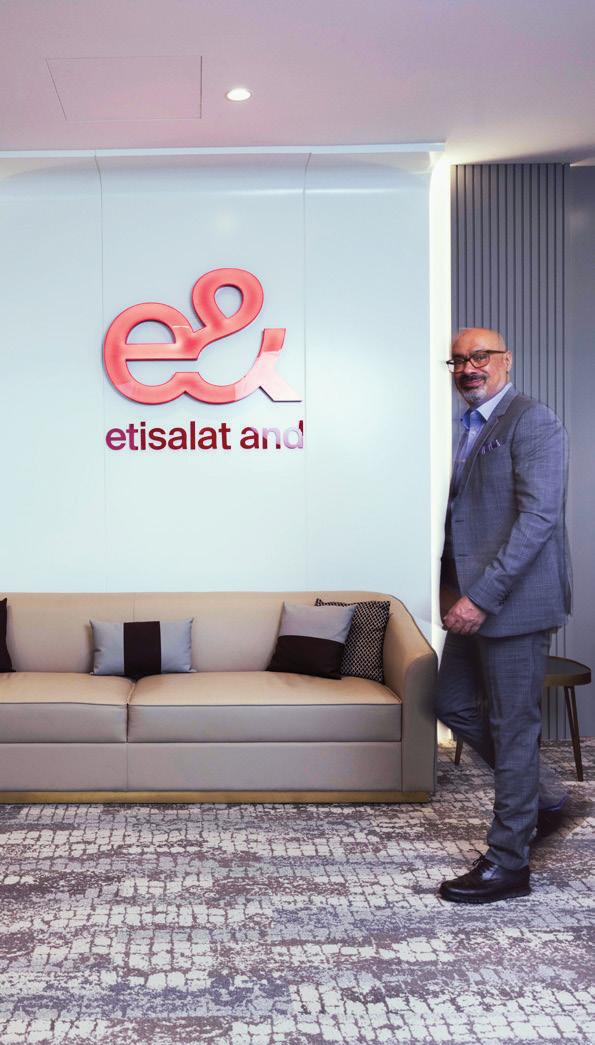


“What we’ve really focused on is putting the customer at the centre — whether that’s an individual, a corporate, a small business, or a government entity. We aim to be a one-stop partner for all their technology needs. For decades, we have delivered connectivity and entertainment on demand.
Today, we’re adding services that meet the needs of a fast-changing world: enterprise solutions like cloud, IoT, cybersecurity, and now AI-as-aservice. Many businesses can’t hire a chief AI officer or build an AI team, so
we do that for them. For individuals, it’s about connectivity, entertainment, our super app partnerships, loyalty programmes like Smiles, and financial tools like e& money. It’s a comprehensive ecosystem designed around daily needs.
Two things. First, it’s the responsibility toward all our stakeholders: customers, employees, and shareholders. Making the company a success is both a privilege and a challenge, and the drive to do a little better every day is exciting.
Second, it’s about reshaping an industry I’ve been in for more than 30 years. Telecom has long been seen as a utility, just about connectivity. We’re repositioning it as the hub of all digital needs, back at the centre of technology where it belongs.
For me, leadership is about the “&” in our name; choosing “and” rather than “or.” Too many companies think they must pick between growth or profitability, telecom or tech. We look at how to combine opportunities, to go for more, not less. It’s about keeping an expansive mindset and encouraging the team to pursue multiple avenues for growth and service.
Challenges are inevitable, whether you’re running a small company, a large corporation, or just navigating life. The key is to understand the real impact of the challenge and what it takes to overcome it. Sometimes you go straight through it, sometimes you must go around it. The first step is always clarity; knowing exactly what you’re facing.
It’s about going for more and creating a legacy. e& has been around for 50 years, which is old in telecom terms. The real question is: what are we building today that will keep this company thriving for the next 100 years? That’s the perspective that drives me.
I believe every day has one thing that matters most. Many people create long to-do lists, but usually, one task will account for 90 per cent of success. Identifying that priority and focusing on it, even if it means dropping everything else, is how I manage my time and ensure progress.
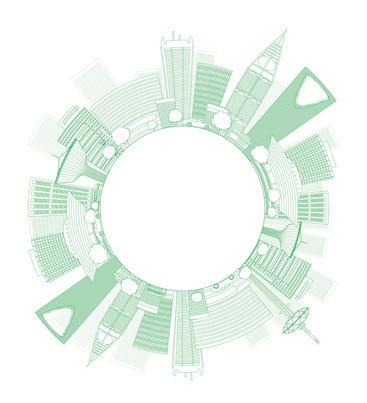
OVER 130 ATTENDEES LISTENED TO DISCUSSIONS FOCUSED ON INNOVATION, REGULATORY REFORM, PUBLIC–PRIVATE COLLABORATION AND INVESTMENT SECTORS DRIVING GROWTH IN THE KINGDOM
BY GARETH VAN ZYL

Saudi Arabia’s rapid transformation under Vision 2030 took centre stage at the first-ever Gulf Business Saudi Business and Investment Summit, held on September 3 at the Sheraton Riyadh Hotel & Towers.
The event brought together influential leaders from government, business, and international organisations to explore how the kingdom is translating its bold vision into tangible results.
More than 130 attendees listened to discussions focused on innovation, regulatory reform, public–private collaboration and investment sectors driving diversification and sustainable growth.


SETTING THE TONE: OPENING REMARKS
The morning opened with a welcome address from Manish Chopra, publisher of Gulf Business, who highlighted the
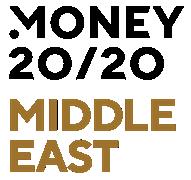
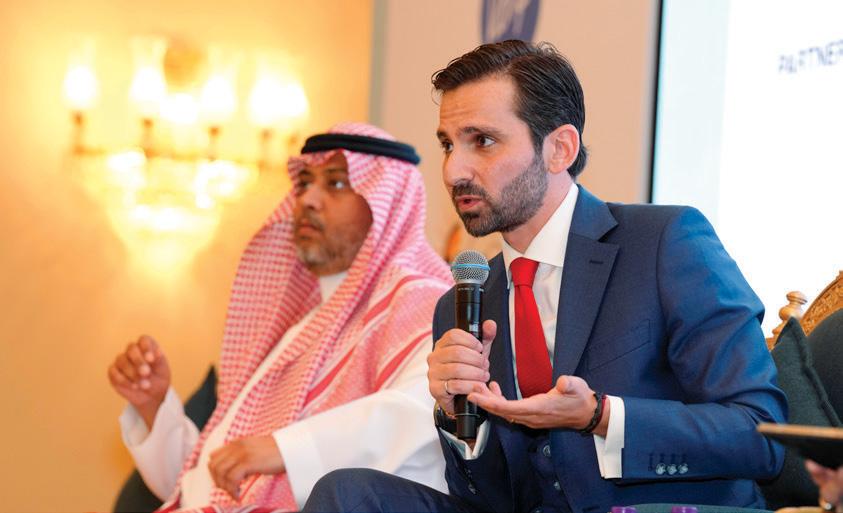


significance of the summit taking place at a pivotal moment in Saudi Arabia’s economic journey. “It’s exciting to bring our platform here at such a transformative time, as the kingdom fast-tracks its development under Vision 2030,” said Chopra. “We hope today’s discussions will inspire and inform, showcasing the opportunities shaping the kingdom’s future.”
Gareth van Zyl, group editor of Gulf Business, followed with a speech underlining the pace of Saudi Arabia’s change.
“Saudi Arabia is on the move,” van Zyl said. “From mega-projects like the Riyadh Metro to the upcoming Expo 2030 and the 2034 FIFA World Cup, the Kingdom is transforming at an extraordinary speed. The Saudi story is growing, getting bigger and more exciting by the day.”
He added: “With our summit today, we’re bringing together diverse voices


to tell the story of this transformation and to explore the practical pathways for companies looking to enter or expand in this dynamic market.”
The first keynote of the day was delivered by Michael Champion, CEO of Tahaluf, who revealed staggering growth figures for the Kingdom’s events sector.
Champion outlined how Tahaluf — joint venture partnership between Informa, the world’s largest trade show
organiser, the Saudi Federation for Cybersecurity, Programming and Drones (SAFCSP), and the Events Investment Fund (EIF) – had helped create worldleading events like LEAP, Black Hat MEA, and Cityscape Global.
“In just three years, our events have generated $17.6bn of economic impact for Saudi Arabia – a bigger contribution than the Qatar FIFA World Cup,” he said.
“More than 100,000 international visitors will fly in for our events this year, creating powerful soft power for the Kingdom and positioning Saudi Arabia as a serious global business hub.”
Champion highlighted the unique public–private collaboration that enabled this rapid growth.
“The only way to grow at this scale is to align closely with government partners and create a marketplace where global companies know they’ll meet the complete tapestry of buyers here in the kingdom.”
Champion highlighted the multibillion dollar impact that Tahaluf has had on the Saudi Arabian economy.
He also shared the company’s extraordinary trajectory.
“In 2022, we had a footprint of just 100,000 square metres for our events. By the end of 2025, we’ll reach 700,000
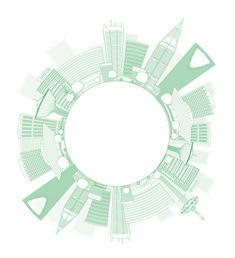

square metres – the equivalent of 17 Wembley stadiums. That’s how fast this sector is scaling.”
Champion announced plans to take Saudi-made event brands international, with the first overseas launch set for Hong Kong in 2026.
The first majlis session, moderated by Annabelle Mander, executive vice president of Tahaluf, examined how Saudi Arabia’s key sectors are advancing Vision 2030 goals.
SPEAKERS INCLUDED:
Saud Adham, director of policy and innovation, ministry of culture, Saudi Arabia
Abhay Bhargava, managing director, Frost & Sullivan Middle East
Patrick Samaha, partner, public sector practice, Kearney Middle East and Africa

Turki Alsubaihi, chief executive officer, public transport, SAPTCO Group Adham emphasised the power of Saudi Arabia’s youthful population.
“Over 70 per cent of Saudi’s population is under 35: a generation hungry for cultural authenticity. We’re channelling this energy to make culture a key driver of our economy,” he said.
Bhargava focused on the country’s evolving investor landscape: “Saudi Arabia has rapidly evolved to meet investor needs across funding, infrastructure, regulations, market access and supply chains – while leveraging its own strengths to attract global capital.”
Samaha, meanwhile, spotlighted digital transformation across government institutions. “Saudi isn’t just digitising services: it’s creating global benchmarks with one-stop platforms and robust data governance that build trust and confidence for both citizens and international investors,” he added.
For Alsubaihi, he highlighted how public transport plays a pivotal role in enhancing quality of life, as witnessed by the launch of the GCC’s largest metro train network.
“The Riyadh Metro is not just a transport project, it’s a lifestyle change. In less than nine months, we’ve moved 100 million passengers, transforming how the city moves.”
“OVER 70 PER CENT OF SAUDI’S POPULATION IS UNDER 35: A GENERATION HUNGRY FOR CULTURAL AUTHENTICITY."

Moderated by Gareth van Zyl, group editor of GulfBusiness, the second majlis session explored emerging opportunities and policy frameworks shaping the next phase of Saudi Arabia’s growth.
SPEAKERS INCLUDED:
Jasem Alanizy, partner, corporate finance, Addleshaw Goddard
Osama AlZoubi, vice president, Phosphorus Cybersecurity
Seton Vermaak, principal consultant, MRM MENAT
Javier Carinena, principal, energy and process industries practice, Kearney Middle East & Africa
Najla Najm, Middle East careers leader, Mercer
Alanizy pointed to momentum in education and financial services. “The education sector is seeing huge momentum, with regulators actively welcoming foreign partnerships and ownership – a transformation unthinkable just a few years ago,” he added.
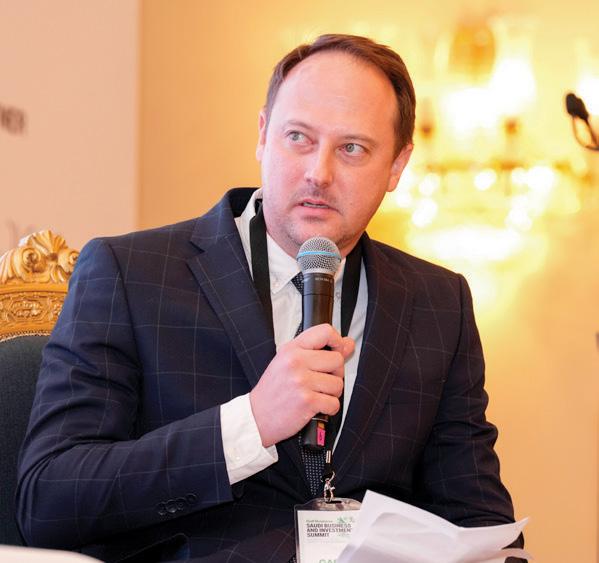

AlZoubi stressed the importance of cyber security: “Cybersecurity is the foundation of Vision 2030’s giga-projects. Many solutions didn’t exist globally – we had to create them here to protect the world’s most ambitious developments.”
Vermaak highlighted the role of data in tourism and business growth.
“Data is the new currency,” Vermaak

said. “By using it ethically and strategically, Saudi Arabia can deliver personalised, world-class experiences for every visitor and citizen.”
Carinena, who spoke about how AI is transforming the manufacturing landscape, urged manufacturers to act quickly on this technology. “We’re no longer at the start of the AI era. Companies must act now to integrate AI into their operations or risk being left behind,” he said.
Najm underscored the need for workforce upskilling: “In today’s world, digital skills are as fundamental as literacy. For Saudi’s workforce, these skills are the foundation for success.”


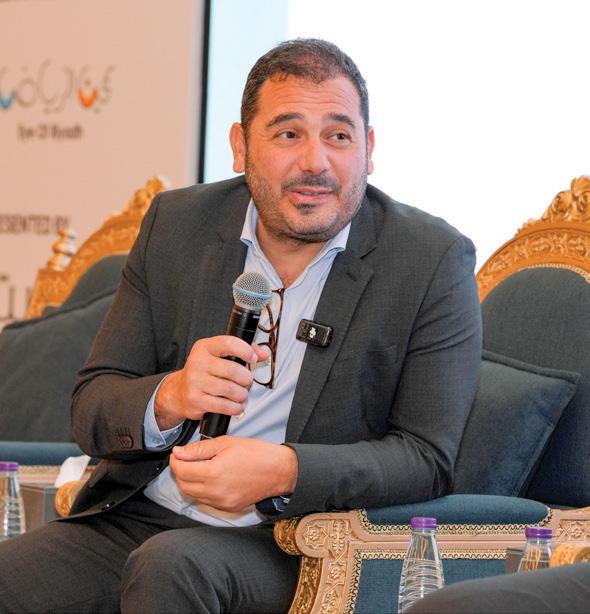

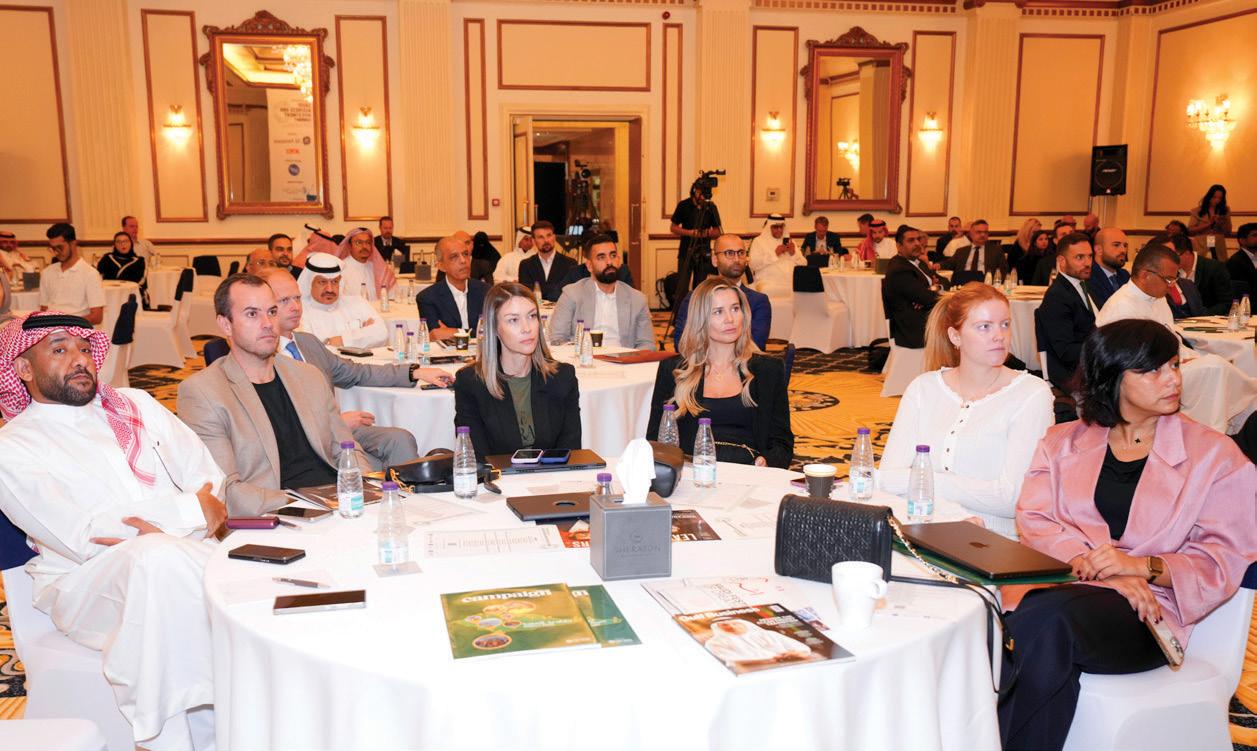
The final panel of the day, moderated by Ravi K Ranjan, founder and chief executive officer, Silk Route, and former curator and business advisor, Shark Tank India, explored what it takes for global companies to succeed in Saudi Arabia.
SPEAKERS INCLUDED:
Maher Abou Nasr, managing director, IHG Hotels & Resorts, Saudi Arabia
Main Canaan, general manager, GE Aerospace Middle East
Tarek Miknas, chief executive officer, FP7McCann MENAT
Abou Nasr highlighted Saudi Arabia’s tourism boom: “Saudi Arabia hit its 2030 tourism target in 2023 – seven years early. Demand is soaring, and we’re
bringing new brands and experiences to match this growth.”
Canaan spoke on building local aerospace capabilities: “Vision 2030 isn’t just about buying aircraft – it’s about building local capability. More than half our workforce in the Kingdom are Saudis operating at world-class aviation standards.”
Miknas emphasised the importance of authentic storytelling: “The most
“SAUDI ARABIA HIT ITS 2030 TOURISM TARGET IN 2023 — SEVEN YEARS EARLY. DEMAND IS SOARING, AND WE’RE BRINGING NEW BRANDS AND EXPERIENCES TO MATCH THIS GROWTH.”


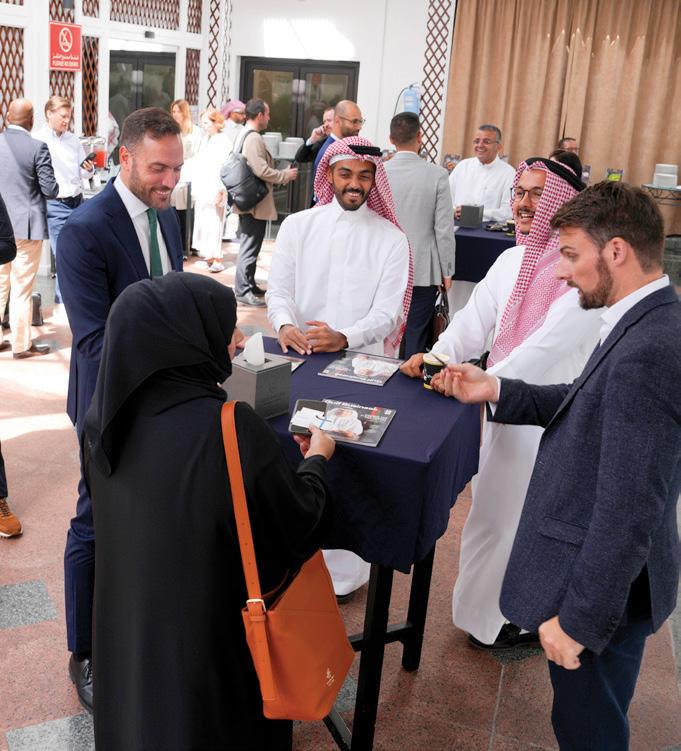
powerful campaigns in Saudi Arabia are rooted in authenticity. Global strategies only work when they are built on genuine local voices and understanding.”
The summit concluded with a high-level networking lunch and the presentation of the inaugural Gamechanger Awards, recognising leaders driving transformation in connectivity, cybersecurity, and aviation technology.
As Saudi Arabia accelerates its Vision 2030 ambitions, the conversations at the Gulf Business – Saudi Business and Investment Summit underscored the Kingdom’s appeal as a destination for innovation, investment, and collaboration.
With record foreign investment, booming sectors like tourism and technology, and a clear pathway for business growth, Saudi Arabia is not just transforming itself – it’s shaping the future of the region.

Cariva, backed by 50 years of UAE automotive legacy, is transforming the used car market with transparency, trust, and innovation
In the heart of Dubai, where gleaming showrooms rise beside highways lined with the latest models, a quiet revolution is taking shape. It doesn’t roar like a sports car engine -- it rises steadily, the way trust does. And the brand behind it is Cariva, a fresh name in the used car market, but one backed by 50 years of automotive legacy through one of the UAE’s most established business groups.
For decades, buying a pre-owned car has been a transaction clouded with hesitation. Questions about hidden repairs, patchy service histories, or unreliable warranties have long made the market a breeding ground for skepticism. Cariva has stepped into this space not just to sell cars, but to change how people feel about buying them.
“For us, it’s about creating an experience where people can move forward with confidence, not hesitation,” says Harshvardhan Singh, head of Business at Cariva. “Confidence, affordability and trust aren’t buzzwords for us they’re the foundation of our model.”
Cariva may be a startup by structure, but its roots run deep. With the strength of years of automotive expertise behind it, the company blends the agility of a new brand with the wisdom of an established
industry powerhouse. That combination makes Cariva unique: nimble enough to disrupt, solid enough to reassure.
Transparency is at the core of its promise. Every vehicle comes with a complete and verifiable service history, stripping away the guesswork that has often left buyers second-guessing. Paired with agency warranties directly from original equipment manufacturers, Cariva ensures customers drive away with the same confidence they would when buying new without the price tag.
Buying a used car is rarely a one-step decision. Understanding this, Cariva has partnered with major banks to provide flexible financing options, including zero downpayment support for eligible buyers. And because no driver should hit the road unprotected, the brand has also aligned with leading insurance companies to give clients seamless access to coverage.
It’s an ecosystem approach: not just selling cars, but ensuring the full journey – from paperwork to peace of mind – is as smooth as possible.

If Cariva’s mission is to transform trust, then its most disruptive innovation may well be the drive now, buy later (DNBL) programme. A world first, DNBL allows customers to live with a car for a few weeks before deciding whether to buy.
It’s not a gimmick. It’s a statement: Cariva is confident enough in its cars to let customers test them in real life – school runs, commutes, road trips – before asking for commitment. For an industry long plagued by buyer’s remorse, DNBL could be the antidote.
“Trust isn’t built in a showroom. It’s built when you realise, that the car feels right for you and your family. That’s the experience we want to deliver,” Singh says.
At its core, Cariva isn’t just about cars. It’s about people, about giving families, young professionals, and first-time buyers the ability to move forward in life without the shadow of doubt hanging over their purchase. In a city like Dubai, where mobility means opportunity, that confidence is invaluable.
The disruption here isn’t flashy. It’s quiet, intentional, and deeply human. By reshaping the rules of trust, Cariva isn’t just another player in the used car market, it’s rewriting the playbook altogether.
In a business landscape where many startups chase speed and scale, Cariva is chasing something rarer: peace of mind. And if trust truly is the most valuable currency in business, then Cariva may have already secured pole position.
For us, it’s about creating an experience where people can move forward with confidence, not hesitation.”

With the We Proudly Serve Starbucks Coffee Programme, Nestlé Professional is helping four- and five-star hotels across MENA elevate guest satisfaction with an iconic global brand
In today’s hospitality world, guests expect far more than just a comfortable bed or seamless check-in. They seek memorable experiences, thoughtful details, and a sense of connection to brands they already know and trust. For premium hotels across the Middle East and North Africa, one of the most powerful ways to deliver on these expectations comes in a cup.
Nestlé Professional, the out-of-home division of Nestlé, is behind the exclusive distribution of the ‘We Proudly Serve Starbucks Coffee Programme’, a premium solution tailored specifically for four- and five-star properties. The concept is straightforward but transformative: bring the globally recognised Starbucks coffeehouse experience into hotels, under the hotel’s own café identity.
The We Proudly Serve Starbucks Coffee Programme is already in place at leading hotels across the MENA region, where it has proven to be a strong driver of guest satisfaction.
Well-travelled, brand-conscious guests perceive higher value, satisfaction scores

improve, and the association with a globally trusted brand reinforces the sense of quality and care.
The We Proudly Serve Starbucks Coffee Programme isn’t simply about supplying beans or machines. It’s a complete end-toend solution that enables hotel staff to serve handcrafted Starbucks beverages to the same standard that guests would expect in a dedicated coffeehouse.
From Cappuccinos and Flat Whites to iconic favourites like the Iced Shaken White Chocolate Mocha and Cold Frappuccino blended beverages, every drink is made using Starbucks 100 per cent Arabica
beans. Hotels can choose between Dark Roast and Blonde Roast blends, offering consistent quality across the board. Seasonal campaigns, such as the muchloved Toffee Nut Latte, also refresh the menu throughout the year, helping hotels keep their offerings relevant and engaging.
For guests, it means the comfort of enjoying their favourite Starbucks beverages, whether in the lobby, at breakfast, or while relaxing in a guest lounge. It’s a solution that is equal parts operationally efficient and emotionally resonant.
As a turnkey solution that blends seamlessly into their service model, the We Proudly Serve Starbucks Coffee Programme makes it easy for hotels to deliver a premium, consistent experience with minimal operational complexity while also strengthening their brand promise.
Nestlé Professional provides branded equipment, servicing, quality audits, and a full suite of marketing assets to ensure consistency. Just as importantly, staff receive barista training to prepare and serve drinks with the same attention to detail and passion that customers associate with the Starbucks name.
For hotel decision-makers, the message is clear, the We Proudly Serve Starbucks Coffee Programme isn’t just about offering coffee, it’s about offering guests a taste of the experience they love, right where they least expect it.
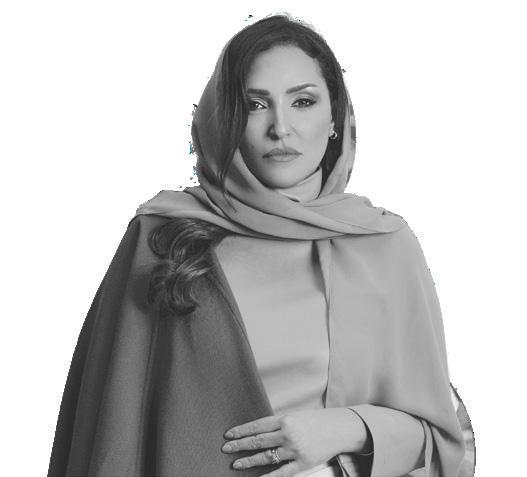



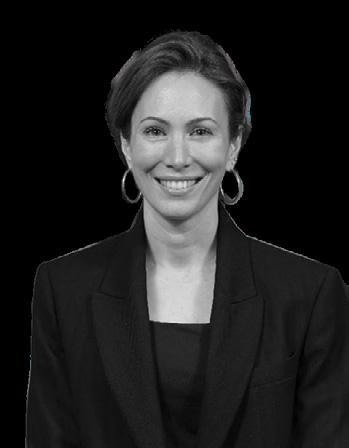

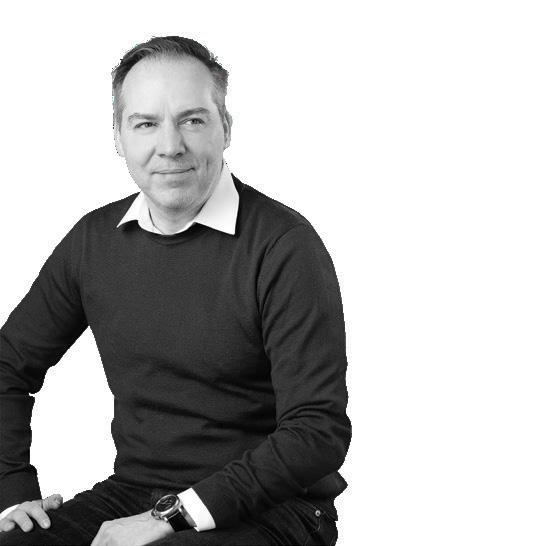
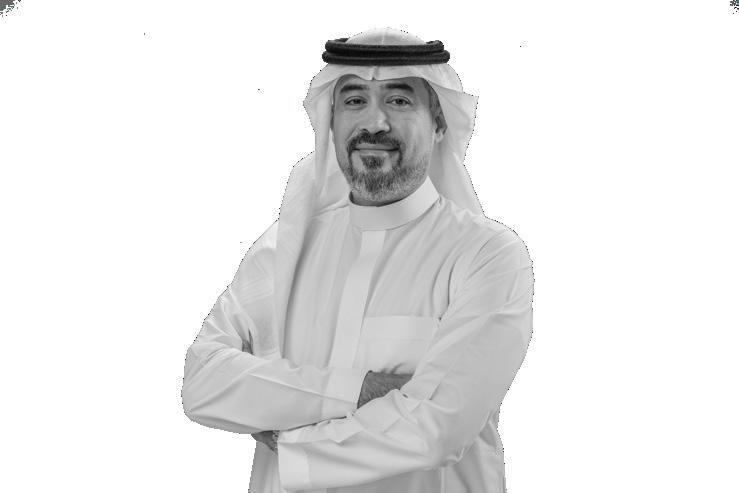
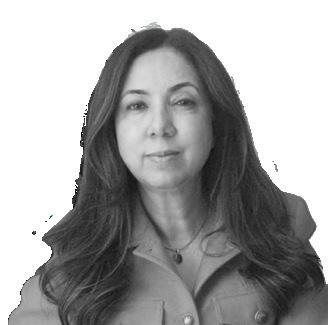
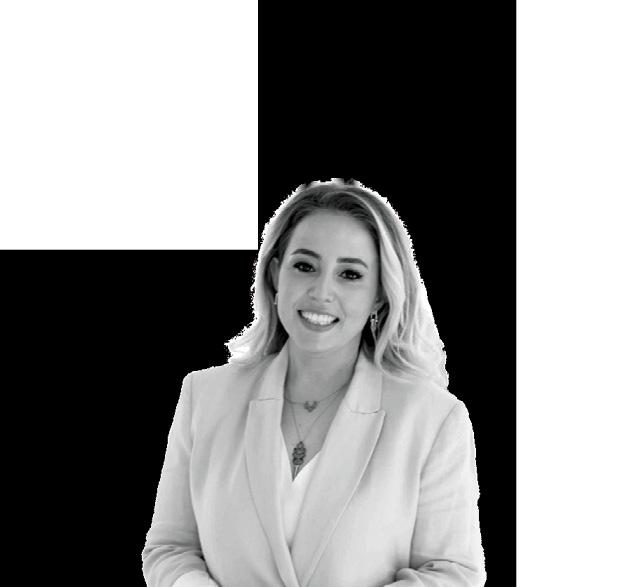


THE 13TH EDITION OF THE AWARDS HONOURED THE COMPANIES AND LEADERS SHAPING THE REGION’S ECONOMIC LANDSCAPE





The Gulf Business Awards 2025 took place on September 24 at The Westin Dubai Mina Seyahi Beach Resort & Marina, recognising the best in business. Now in its 13th year, the event once again cemented its reputation as the region’s premier platform for celebrating innovation, resilience, leadership, and excellence across industries.
With more than 350 of the Gulf’s most influential executives, entrepreneurs, and decision-makers in attendance, the evening was a celebration not only of the winners, but of the remarkable progress and transformation taking place across the region’s business landscape.
The Westin Dubai Mina Seyahi provided the backdrop for an evening of recognition and networking. Guests were welcomed to a



Over more than a decade, these awards have become a benchmark for excellence, spotlighting the visionaries, trailblazers and companies shaping the region’s future.”
red-carpet reception before gathering for a gala dinner that combined fine dining with thought-provoking conversations. The setting underscored the prestige of the Gulf Business Awards, elevating the sense of occasion for honourees, judges, and attendees alike.
As always, the highlight of the night was the announcement of the award winners across company and leadership categories spanning banking, real estate, healthcare, technology, tourism, energy, and more.
Among the evening’s most celebrated honourees was Gerald Lawless, executive and former CEO of Jumeirah Group, who received the Lifetime Achievement Award. Lawless was recognised for his
decades-long impact on the hospitality sector and his role in shaping Dubai into a global tourism and leisure hub.
In his speech Lawless remarked: “I would like to dedicate this award to His Highness Sheikh Mohammed bin Rashid Al Maktoum. I have had such a privilege to have worked directly for His Highness in the creation and the establishment of the Jumeirah Group back in 1997 and I’ve spent beautiful years looking after that great company. I am so proud of what it has achieved, and so now it continues to achieve.”
Another major highlight was the Business Leader of the Year Award, presented to Rola Abu Manneh, CEO – UAE, Middle East and Pakistan, Standard Chartered. During her tenure, she has overseen significant growth in the UAE business



and championed women’s empowerment and inclusive leadership across the region.
The Company of the Year Award went to Miral Group, the Abu Dhabibased creator of immersive destinations and experiences. Miral was recognised for its ambitious projects, sustainable development ethos, and contribution to positioning Abu Dhabi as a global tourism and entertainment capital. From Yas Island to SeaWorld Abu Dhabi, Miral continues to embody the transformative power of visionary planning and execution.
Winners were selected by an esteemed

independent panel of judges, who brought decades of experience across media, finance, technology, and healthcare to the process.
The panel included Ian Fairservice, managing partner and group editor-inchief, Motivate Media Group; Mishal Kanoo, chairman, The Kanoo Group; Jawad Jalal Abbassi, head of MENA, GSMA; Reenita Das, partner and senior vice president, Frost & Sullivan; and Gareth van Zyl, group editor, Gulf Business Fairservice noted: “Over more than a decade, these awards have become a benchmark for excellence, spotlighting the visionaries, trailblazers and companies shaping the region’s future.
Gulf Business has been proud to chronicle this journey through our magazine and digital platforms, capturing the remarkable growth and transformation of the Gulf.”
Together, the judges ensured a fair and transparent evaluation process, focusing on merit, impact, and relevance to the region’s business ecosystem. Their insights and rigorous assessments helped to shine a spotlight on deserving winners while underscoring the depth of talent and innovation across the Gulf. Beyond the awards themselves, the evening served as a powerful networking platform. Executives and entrepreneurs from across the GCC engaged in meaningful conversations about investment, digital transformation, and the region’s evolving economic priorities.
In his closing remarks, Gareth van Zyl, group editor of Gulf Business, said: “This year’s Awards underscored not only the incredible progress we’ve seen across the Gulf’s business ecosystem, but also the exciting future that lies ahead. These winners are setting new benchmarks for innovation and impact.”

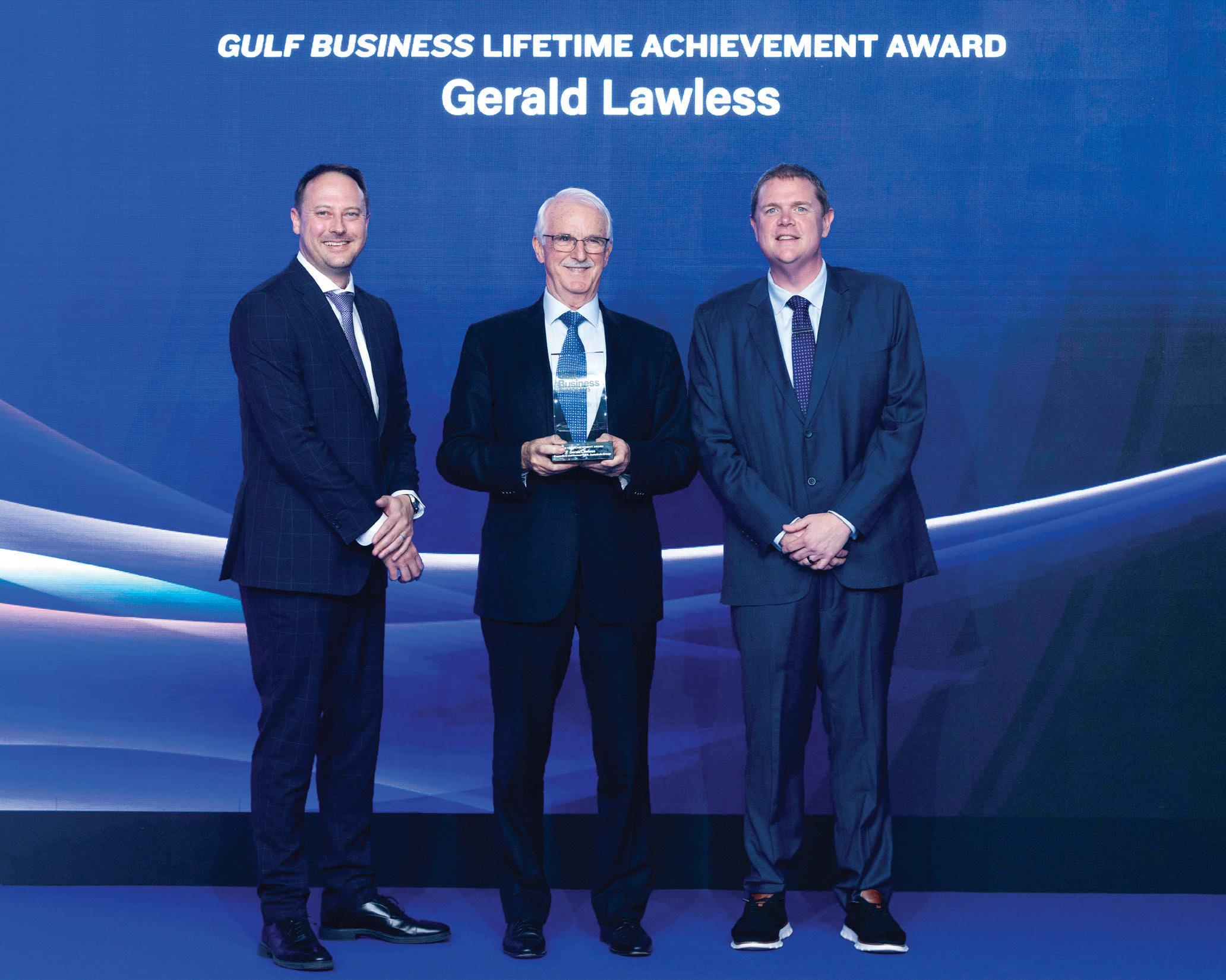







Real Estate Company of the Year winner Refad Real Estate Investment and Development Company.
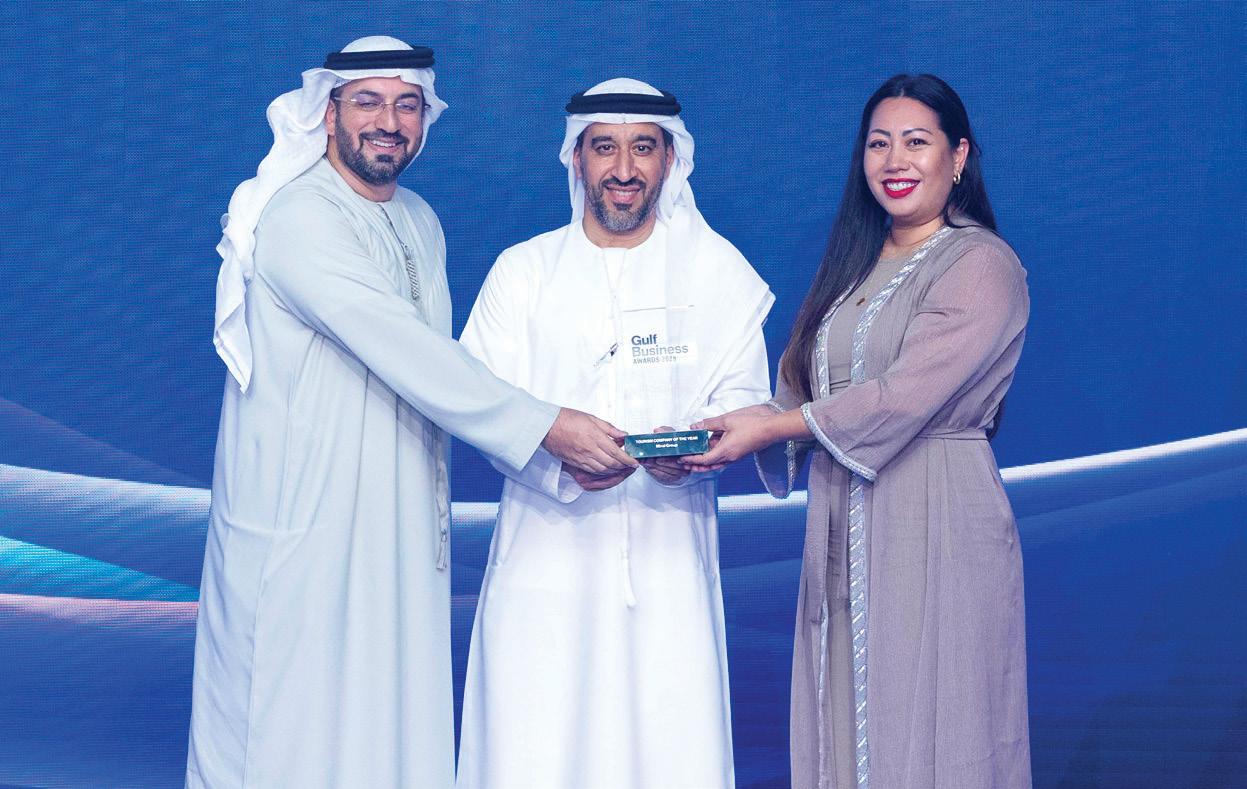

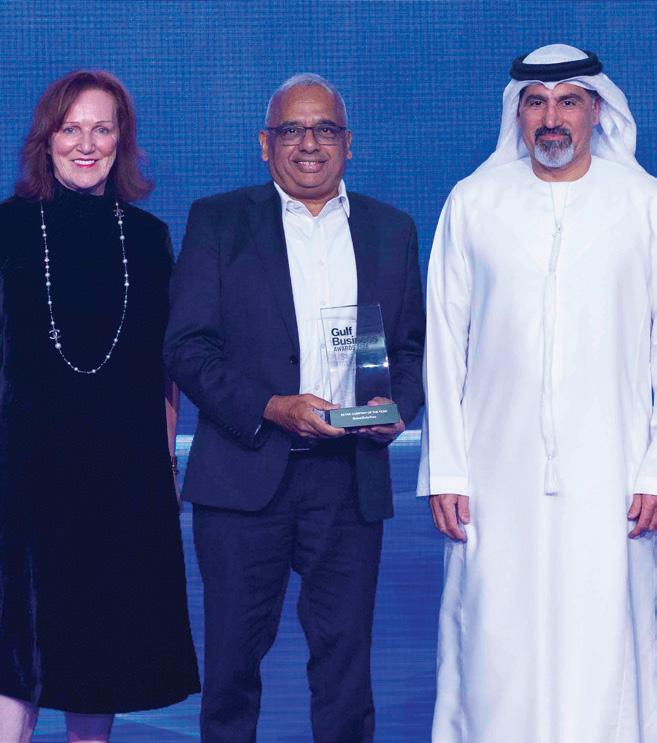






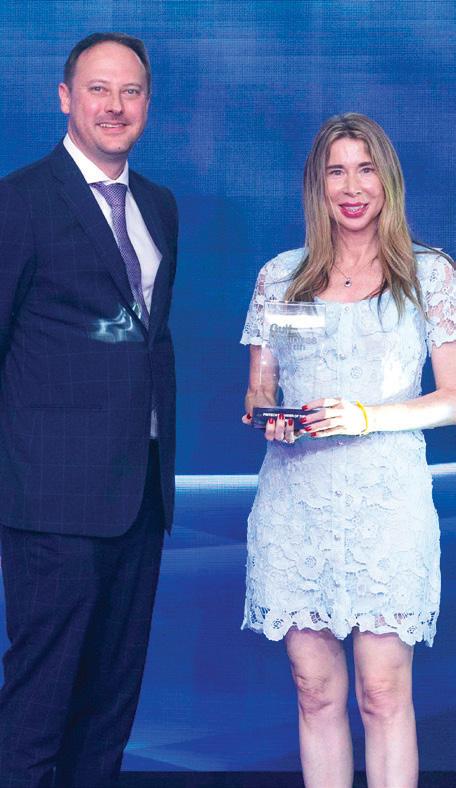




Business Icon of the Year winner
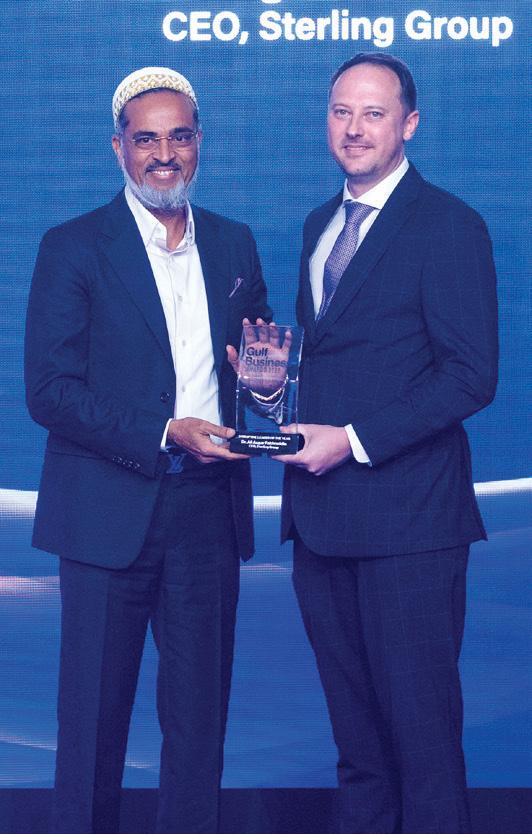


(Note: We haven’t placed a few images as the awards were accepted on behalf of people/ companies)
Investment Leader of the Year: Bal Krishen Rathore, CEO and chairman, Century Financial Group
Retail Leader of the Year: John Hadden, CEO Alshaya Group
Tourism Leader of the Year: Mohamed Abdalla Al Zaabi, group CEO, Miral Group
Transport Leader of the Year: Adel Mardini, CEO, Jetex
Logistics Leader of the Year: Tarek Sultan, Chairman, Agility Global
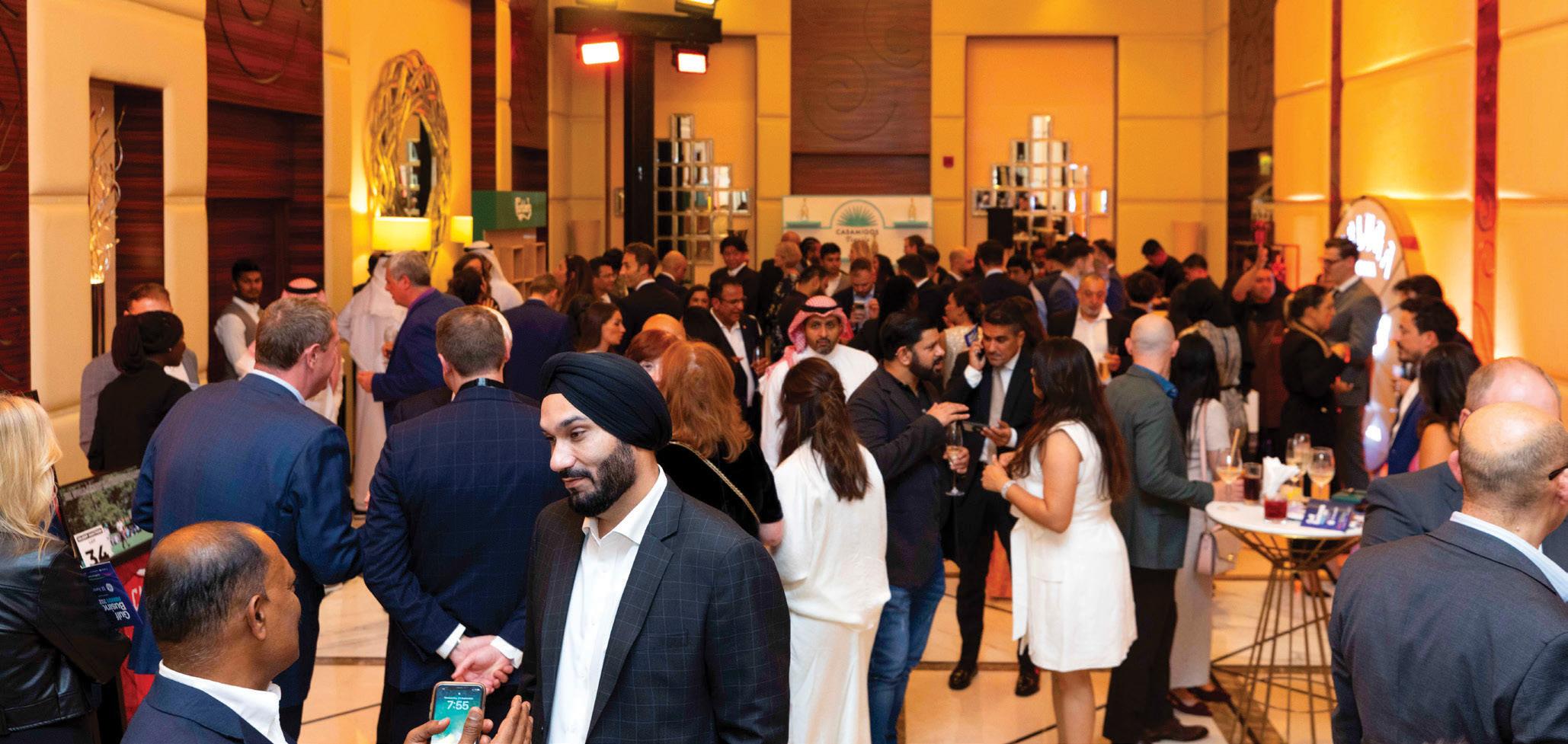

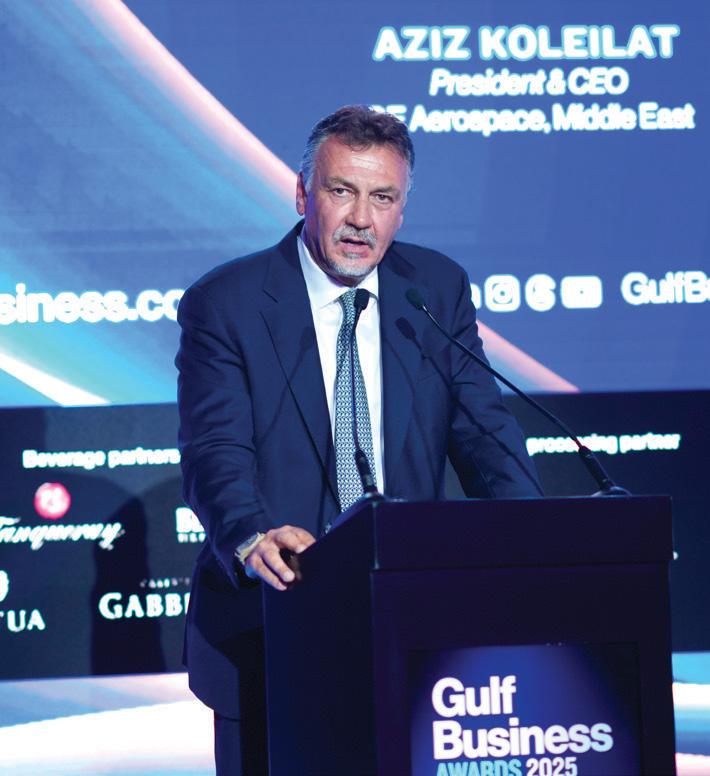




Rubrik is doubling down on cyber resilience and AI-driven innovation, balancing aggressive global expansion with operational discipline to ensure sustainable profitability
Rubrik has built its reputation on cyber resilience, but operating at global scale requires strong business fundamentals. What operational priorities are you focused on to ensure profitability while still growing aggressively?
Our operational priorities are focused on driving long-term growth and profitability. We manage our performance with key measures that we report each quarter.
The market for cyber resilience is massive and expanding, particularly as companies adopt cloud and AI, and threats increase. To capture substantial market share, we continue to build a portfolio of products and innovate at different stages and at different levels of risk. Our approach allows us to leverage our proven products as a foundation for growth, while actively investing in new innovations to stay ahead of the curve. Rubrik is building an enduring, profitable, and growing business for the long term.
The partnership with Pure Storage was a major strategic move. From a business standpoint, how does this
collaboration expand Rubrik’s reach, and what impact do you expect it to have on earnings growth?
Rubrik and Pure Storage deliver a comprehensive cyber resilience solution that ensures efficient, modern, and secure data protection for both shortterm and long-term storage. We’ve accelerated sales cycles, driven larger deals, and pioneered new customer segments. As always, we win when our customers win, fueling growth and strengthening our position.
You’ve often spoken about human error being at the root of many disruptions. Looking ahead, how are you investing in technologies like AI and automation,
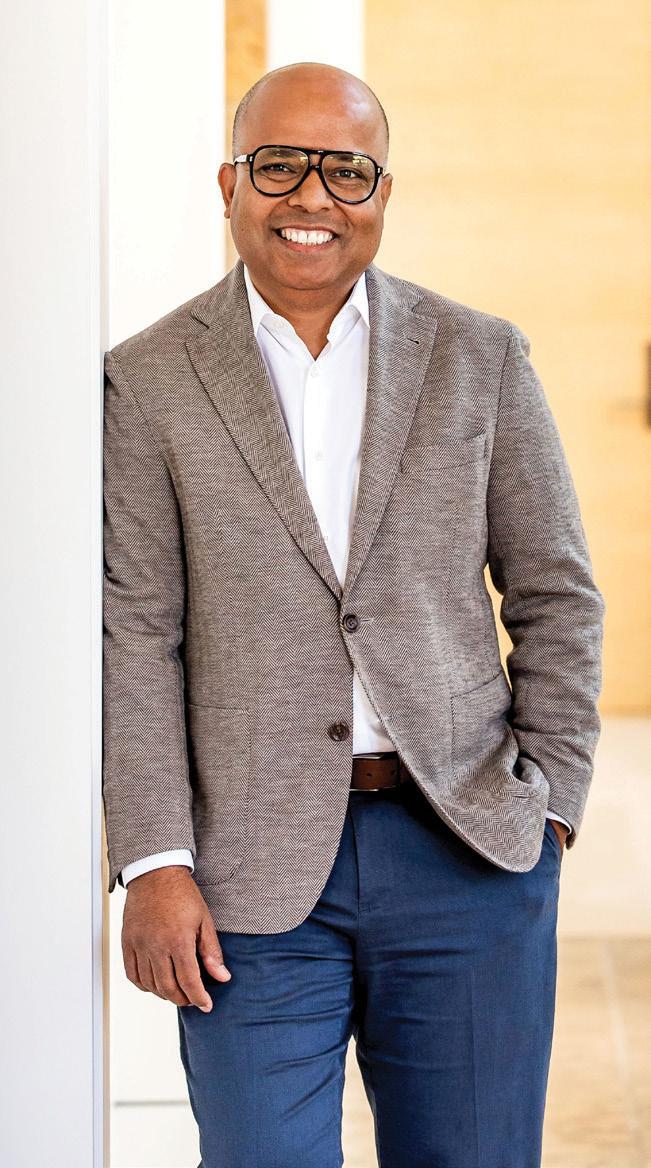

not only to strengthen resilience but also to streamline Rubrik’s own operations and cost structure?
Humans and AI will work closely together, and there’s an error risk from both. We build guardrails and safeguards, adding to our capabilities in anomaly detection and threat hunting, for AI visibility, auditability, and mistake correction.
A recent example of a new solution that merges human and AI is Identity Resilience, which is designed to secure the entire identity landscape alongside data. Identity Resilience aims to protect the most common entry points for attackers – human and non-human identities (NHIs) – to help organisations maintain operations with minimal downtime.
We’re infusing AI across our platform and operations, with companywide learning, new tools, and shared successes, so our employees and customers automate more tasks and focus on what they do best. AI isn’t just incremental; it’s game-changing for us.
Humans and AI will work closely together, and there’s an error risk from both. We build guardrails and safeguards, adding to our capabilities in anomaly detection and threat hunting, for AI visibility, auditability, and mistake correction.”

THE CEO DISCUSSES THE STRATEGIC THINKING BEHIND WIO BANK’S SUCCESS, ITS UNIQUE APPROACH TO SERVING SMES AND CUSTOMERS, AND HIS VISION FOR THE FUTURE OF BANKING IN THE REGION
BY NEESHA SALIAN
Wio Bank has emerged as a ‘platform bank’ in the UAE, blending technology and finance to simplify money management for businesses and individuals. Led by CEO Jayesh Patel and backed by stakeholders like ADQ, Alpha Dhabi, e& and FAB, Wio has achieved fast growth and profitability. The bank reached profitability in 2024 and swelled its balance sheet to Dhs37bn just two years after launch. It has become a dominant player in the SME segment, serving over 105,000 businesses and freelancers. A key part of Wio’s strategy is partnerships, which have enabled innovative offerings like real-time integration with accounting platforms, travel rewards with Etihad Airways, and access to IPOs through the ADX and DFM. This approach allows Wio Bank to weave financial services into the daily lives of its customers, making banking more accessible and intuitive.
Wio’s success is rooted in its customer-centric approach, leveraging AI and technology to simplify backend processes and the user experience. The bank’s focus on transparency, simplicity, and value has resulted in a high Net Promoter Score, showcasing its commitment to a user-first experience.
In this interview, Patel discusses the strategic thinking behind Wio Bank’s success, its unique approach to serving SMEs and customers, and his vision for the future of banking in the region.
How has the first half of the year been for Wio Bank?
We’re very thankful for the continued adoption of WIO across all segments. Our individual customer base has grown to over 200,000, and we’re seeing them engage more deeply with our products and investment opportunities. On the SME side, we’re now likely the largest
SME bank in the UAE by customer numbers, with over 105,000 businesses on board. We’re adding roughly 5,000 new SME customers every month, which is really exciting. Being part of their success stories – helping entrepreneurs turn their ideas into thriving businesses – is extremely rewarding. Overall, it’s been a strong start to the year, and all indicators point to continued growth for our region.
Partnerships seem to be a big part of your strategy. Can you explain why they are so important and how they benefit your customers?
Absolutely. For us, partnerships are all about delivering more value to our customers and helping them achieve their goals. We look at it from two fronts: Wio Bank for banking services and Wio Securities for investments.
For example, we partnered with Etihad Airways to offer phenomenal rewards when customers book a fixed deposit with us. Not only do they get rewards, but it also indirectly incentivises saving. More savings lead to more rewards and ultimately more value for them and their families.
On the investment side, we’ve partnered with a digital assets platform so customers can get exposure to digital assets such as crypto growth. We also work with ADX and DFM to give our customers access to IPOs in local companies. These partnerships ensure customers can grow their wealth in multiple ways.
For SMEs, we’ve partnered with accounting software platforms like Xero and Zoho, as well as major accounting firms. This ensures seamless integration of their financial data, helps with tax planning, and allows business owners to stay in good order while focusing on growth. Overall, every partnership is aimed at making sure individuals and entrepreneurs get more out of being with us.
What are some of the key trends driving customer buy-in. How do you leverage these trends to attract and retain clients? One of the main trends we’re capitalising on is simplicity. Across every platform and industry, simplicity is becoming increasingly important, and we’re making sure that’s central to everything we offer.
OUR STRATEGY IS SIMPLE. FIRST, EVERYTHING WE BUILD STARTS WITH A CLIENT-FIRST MINDSET. SECOND, WE RELEASE ONLY PRODUCTS THAT DELIVER REAL BENEFITS. WE FOCUS ON FEWER THINGS, BUT WE DO THEM BETTER.”
We also focus on solving practical problems that make a real difference. For example, household expense management is a surprisingly underserved area. Families often struggle to track spending because money is dispersed across multiple cards and individuals. Using our platform, customers can gain awareness of their spending patterns and make better decisions. I experienced this myself – after realising how much I was spending on coffee each month, I cut it down by 80 per cent simply through insight and awareness.
Our strategy is simple. First, everything we build starts with a client-first mindset. Second, we release only products that deliver real benefits. We focus on fewer things, but we do them better. Third, we prioritise ongoing client satisfaction. Unlike some companies that focus on acquisition and then shift attention away, we ensure existing clients stay happy. That’s why a large proportion of new clients come via word of mouth that’s around around three out of five, or roughly 30 per cent.
On the tech side, we’re opex-centric rather than capex-centric. In a SaaS (software-as-a-service) -driven economy where subscription and agility matter, this approach allows us to adapt and pivot quickly without the heavy costs traditional banks face. Being a digital bank makes us far more agile than traditional giants, and that will always be an advantage.
How is AI shaping the services you provide?
AI is a big focus for us, but it’s all about making it useful. We’re working on two fronts. First, AI helps clients understand their money better. For instance, our AI insights feature can explain how investment portfolios are performing in simple, relatable terms and provide comparisons to benchmarks. Second, we’re using AI on the back end to ensure that whatever customers want to do is done faster. The goal is to make interactions smoother, decisions smarter, and
processes more efficient, turning AI into a practical tool for everyday banking and financial planning.
What are some of the key challenges Wio is focused on addressing?
We’ve tested a number of credit products, and while we’ve seen some success, I think there’s still room to improve. It’s not just about giving customers access to credit, but about helping them use it well. Many customers don’t always need a large loan; they just need a small piece of financing that fits their specific needs. Structuring credit in a way that really works for them is a big focus for us.
On investments, we’ve built strong products, but now we want them to be more meaningful in people’s lives. Take something personal, like saving for a child’s education. Tuition fees today might be Dhs40k, but in ten years they could be closer to Dhs 90k. Parents need the right tools to prepare for that journey, and we’re working on products that address those kinds of goals.
Service is another area where we see opportunity. Today, our call centre aims to answer in under two minutes, but the real challenge is how to make those interactions richer and more proactive. Whether it’s through WhatsApp or AI-driven support, we want to make banking conversations more immediate and useful.
Fraud and security remain non-negotiable. We continuously focus on protecting our customers and have already introduced safeguards like requiring in-app approval for Apple Pay setup, which has shown positive results. But with new threats emerging, like device theft in cities abroad, we’re also building tools to make those risks easier for customers to manage.
Finally, on the business side, we’re looking at how to serve entrepreneurs in more sector-specific ways. If you’re in healthcare, for example, we want to partner with the right players and provide solutions that help you grow.
Banking is no longer static, it changes too quickly now, and our job is to stay several steps ahead of both customer needs and competitors.
As a leader, what excites you most about coming to work every day? And what values you hope reflect in the business?
I think the first thing is my team. I work with an incredible set of people who are obsessed about one thing, making the customer win. You go to the office, you hear great ideas, you see people who are incredibly passionate and wanting to do the right thing for our customers. That to me is probably the biggest driver of all our excitement around work.
The second big thing is I love technology, and it’s changing so rapidly. If you understand it well, the opportunity is immense. You don’t get bored, because every three weeks there’s something new to do. The third thing is the UAE itself. Our region is doing fantastically well. We’re growing, we’re seeing a lot of new companies, a lot of new businesses. Over the past few years, we’ve suddenly become a hub of technology companies, and there are so many amazing developments happening in the market that allow us to do more. Like the launch of open finance in the UAE, which is going to bring a world of opportunities. Aani, the instant payment platform, will also drive innovation in the market, as well as stablecoin regulation, which is phenomenal – most markets don’t have it.
So, there’s a lot to look forward to. And honestly, the most rewarding thing is when a customer tells you their story: how their business is better off because they started with us, or how they’re now able to plan their money better. For the whole team, that’s what it’s all about. It’s always great to see, and it keeps us excited.
On a parting note, what does Wio Bank in the future look like?
To me, it’s an AI-enabled partner that helps you achieve more of your life goals that require money. That’s really what I see it as. The objective stays the same: we want to help you achieve your goals, but AI allows us to do it better, smarter, and more seamlessly.

KEMPINKSI HAS AN AMBITIOUS EXPANSION PLAN THAT INCLUDES SETTING UP MORE THAN 30 NEW HOTELS AND RESIDENCES ACROSS THE MIDDLE EAST, ASIA AND AFRICA
BY NEESHA SALIAN
For more than a century, Kempinski Hotels has defined European elegance and timeless service, welcoming royals, celebrities, and travellers seeking a refined sense of luxury. Today, under the leadership of Barbara Muckermann, its first female CEO, the 128-year-old brand is writing a new chapter. With an ambitious expansion plan that includes more than 30 new hotels and residences across the Middle East, Asia, and Africa, Kempinski is embracing the region’s fast-evolving taste for authentic, curated luxury while staying true to its heritage.
In this conversation with Gulf Business, Muckermann reflects on the balance
between tradition and reinvention, the power of diversity, and the trends reshaping what true luxury means for the next generation of travellers.
Kempinski is Europe’s oldest luxury hospitality group, and you’re the first female CEO in its 128-year history. How do you balance preserving its European heritage while adapting the brand to the rapidly evolving Middle Eastern luxury market? Our brand and heritage are tremendous strengths. As Europe’s oldest luxury hospitality group, they speak to timeless elegance, craftsmanship, and a deeper commitment to service excellence. In discovering the
history of the brand, I learned that Kempinski has always been in the vanguard of hospitality, originating several service innovations that we take for granted today. In addition, Kempinski has been the first choice for royals, diplomats, and celebrities throughout its history, which helps drive our commitment to luxury.
For the Middle East, where guests’ expectations are constantly evolving, we see an exciting opportunity to reinterpret true luxury in a way that resonates. For example, we are working to increase the number of historic and resort properties in our portfolio, so that loyal guests can stay within the Kempinski ecosystem throughout their travels.
Equally important has been the process of empowering our regional teams and investing in talent and leadership. Incredible experiences and great service aren’t just about polish – they’re about creating experiences that feed the human spirit and help build connections. That human connection is what brings the Kempinski experience to life, wherever we are in the world.
Kempinski plans to add more than 30 new hotels and residences across the Middle East, Asia, and Africa. What specific opportunities do you see in the GCC, and how will you ensure these new properties resonate with local culture and ultraluxury expectations?
We see strong growth opportunities within the region, particularly in destinations that position themselves as global lifestyle and cultural hubs – Riyadh, Doha and Dubai for example – as well as emerging leisure destinations such as Oman and Saudi Arabia. We are enhancing our current properties to ensure that they can provide curated, hightouch luxury experiences that go beyond traditional hospitality.
We know from experience that Kempinski guests seek a genuine connection to the places they visit and want to be immersed in the destination, as opposed to feeling they could be anywhere in the world. So, the more of the destination we can reflect,
BUILDING A DIVERSE LEADERSHIP TEAM CAN TRULY SHAPE A STRONGER, MORE THOUGHTFUL BRAND. WHEN YOU BRING DIFFERENT PERSPECTIVES TO THE TABLE, ESPECIALLY IN A SPACE LIKE LUXURY HOSPITALITY, IT CHANGES THE WAY YOU THINK ABOUT EVERYTHING.”
from the moment someone walks into the lobby, the more meaningful and memorable the stay becomes. A big part of that is working closely with regional developers, artists and designers to reflect the aesthetics, values and expectations in every aspect of the guest experience.
Of course, the MENA region is also an important source of outbound travel for properties in Asia, Europe and Africa. We are seeing strong interest from the region across our portfolio, particularly as we add new properties. A great example is the Kempinski Royal Residence Nymphenburg, just outside of Munich, which we started operating this year.
Nymphenburg was the Royal House of Bavaria for more than 200 years and it is more than a luxurious retreat – it is a living monument to royal history and lifestyle, and that distinct offering is proving very appealing to families from the Gulf region.
You’ve emphasised regional structure rather than central control from Geneva. How does this decentralisation enable your Middle East teams to deliver authentic, localised luxury experiences?
We’ve placed a strong focus on deepening our presence in the key regions of Europe and the Middle East. The former because that is where our roots are and where we work with many institutional partners, and the latter to be close to our shareholders and to benefit from the region’s strong growth. This is strategically very important.
One of the first things I wanted to reinforce when I joined Kempinski was the importance of a strong regional structure. We are immensely proud of our heritage and global standards, but true luxury is always local and needs to reflect the cultural context and nuances of each market.

By trusting the people who are closest to the experience, we give them the tools and freedom to shape guest experiences in a way that feels authentic.
In practice, this provides for greater agility and deeper cultural alignment. It also builds stronger relationships with our owners, because we’re able to respond quickly and with a real understanding of what success looks like in their specific market.
Building a diverse leadership team is one of your priorities. Could you share how you’ve championed gender diversity and other inclusive practices since taking the helm?
Building a diverse leadership team can truly shape a stronger, more thoughtful brand. When you bring different perspectives to the table, especially in a space like luxury hospitality, it changes the way you think about everything, from design to guest experience. I’ve been very intentional about bringing more women into senior roles, not just because it’s the right thing to do, but because it genuinely improves the way we operate.
As one example, Nadine Al Bulushi, who was the first Omani woman to become a hotel general manager, leads Kempinski Hotel Muscat and was recently named GM of the Year: Oman in the Hotelier Middle East Awards. Rasha Lababidi joined us as chief product officer and immediately started asking the kinds of questions others might not, spotting small but important things that impact how our guests feel. Karin Raguin, who has joined as the new
chief human resources officer, is bringing in a lot of knowledge and experience from the luxury goods and fashion industries, helping us to sharpen our focus on the customer.
That’s what true diversity brings – it changes the way we think and the way we work.
We’re working to make this part of our culture. Whether it’s hiring, mentoring, or developing talent, the goal is to create a space where different voices can grow and lead.
Key trends that are redefining the hospitality sector – any particular ones you are focused on?
We’re seeing a clear move towards brand consolidation. For years, the industry has focused on rapid expansion and diversifying brand portfolios, but that’s starting to shift. Guests want to know exactly what a brand stands for and the winners will be those who stay focused and build real emotional connections with guests – not just scale. For Kempinski, this means going back to luxury and redefining and strengthening our luxury appeal, using the strength of our European perspective to make us different and unique – the market only pays for difference and uniqueness.
We can also see a meaningful change in how luxury is defined. Today’s travellers aren’t looking for excess or extravagance, they’re looking for experiences that feel authentic and tailored to who they are and what they need at that point in time. This idea of ‘quiet luxury’, where refinement is subtle and intuitive, is becoming increasingly relevant. At the same time, we can see a rise in adventurous travelers who are curious about the destinations they visit. This opens up a tremendous wealth of opportunities for hoteliers and operators to craft more immersive, story-driven experiences.
Wellness is another area that has become non-negotiable. It’s no longer limited to spa offerings. We’re seeing holistic wellbeing presented across different touchpoints throughout the entire stay. Whether it’s sleep, movement, nutrition, or a sense of calm, guests are expecting wellness to be woven into the full experience, and this is a key pillar that we’ll be focusing on at Kempinski. You can expect to see these experiential changes in the Kempinski offering in the coming months.

ROHAN MEHTA SHARES INSIGHTS ON HOW HE IS BLENDING A FAMILY LEGACY WITH MODERN STRATEGY TO STEER ONE OF THE UAE’S LARGEST CHEMICAL DISTRIBUTORS INTO A NEW ERA OF GROWTH, TECH ADOPTION, AND PEOPLE-FOCUSED LEADERSHIP
BY NEESHA SALIAN
If you grew up in Dubai in the 90s, you might remember the era when businesses started from scratch — often in living rooms and spare bedrooms. For Rohan Mehta, managing director of Petrochem, those memories are personal. “We literally started in our apartment. I remember the first computer, my dad on the phone, my mum cooking for the team,” he says. “As an only child, I was always around the business — even on school holidays, I’d be in my dad’s office or travelling with him.”
Started in 1995, Petrochem’s story is rooted in the drive of its founder, Yogesh
Mehta, who built it from a one-room office into a nearly $2bn chemical distribution powerhouse in Jebel Ali.
With Mehta taking a more prominent role after more than 12 years with the company, the goal isn’t to reinvent the wheel. “It’s about evolving, adapting to market changes, but keeping the DNA the same,” he says.
A GROUNDED START BEFORE TAKING THE REINS
Despite the early exposure, Mehta didn’t step straight into the family business.
Following his father’s advice – “take your time, this isn’t going anywhere” – he studied in Boston, then worked for a petrochemical manufacturer in Dallas. “That was two and a half years of seeing how complex manufacturing, from sourcing and production to market placement. It’s given me perspective on why certain ventures make sense and others don’t.”
By the time he returned to Dubai nearly a decade later, Petrochem had grown far beyond what he remembered. “My dad’s leadership and resilience have been a constant. Every day, it was ‘we’ve come this

THE NEW GENERATION ISN’T JOINING JUST FOR A PAYCHECK – THEY WANT TO KNOW WHAT THE COMPANY IS DOING FOR THEM... PETROCHEM HAS KEPT TURNOVER LOW –90 PER CENT OF SENIOR LEADERS HAVE BEEN THERE OVER 15 YEARS – BY BUILDING A STRONG FAMILY-LIKE CULTURE.”
far, now we can go further.’ That mindset is ingrained here.”
Rather than rushing to make sweeping changes, Mehta has focused on sustaining Petrochem’s growth by building trust, nurturing teams, and adapting to new challenges.
Manufacturing was always an ambition, but market realities shifted the plan. “We can’t ignore the fact that China can produce and deliver at prices and speeds we can’t match locally,” Mehta explains. “So we doubled down on distribution, in particular the service side. That’s where we have high barriers to entry and a real competitive edge.”
Petrochem’s core now is supplying industrial raw materials for everything from paints and inks to oil, fuel, and pharmaceuticals. The network stretches across the UAE, Saudi Arabia, India, and Egypt. “We grew with the region,” he says. “Our
customers – ADNOC, SABIC, Aramco –trust us to handle their products and get them to end users efficiently. The plan is to deepen that presence in key markets such as Saudi Arabia, Egypt, and South Asia rather than overextend.”
Petrochem may look like a traditional, asset-heavy operation, but technology
has been central since day one. “We’ve always been big on tech – Oracle, SAP –long before it was standard,” Rohan says. The company now integrates AI and even builds in-house robotics to streamline operations. “Given our scale — 300 plus products, millions of metric tonnes –tech isn’t optional. Without it, we simply couldn’t operate.”
The commitment has made Petrochem a testing ground for global tech providers. “They come to us with pilots, and it’s a shortcut to learning what’s next globally.”
For Mehta, success is as much about people as it is about profit. “The new generation isn’t joining just for a paycheck –they want to know what the company is doing for them,” he says. Petrochem has kept turnover low – 90 per cent of senior leaders have been there over 15 years –by building a strong family-like culture. “Most company events are family events. My dad always included the team in our lives, and I keep that going.”
Much of Petrochem’s growth, Mehta acknowledges, is tied to the UAE’s leadership and infrastructure, which created the environment for the company to thrive.
Mehta is candid about the pressures of leadership. “It’s lonely at the top. I’m not here to grow into a $10bn company for the sake of it – I’m here to make sure we do well every year, sustainably.”
Outside work, golf and time with his children keep him grounded. “Golf teaches patience – my dad’s been telling me that for years. And my kids teach me something new every day.”
He also draws on lessons from his executive MBA at Harvard. “You realise everyone is dealing with the same challenges – legacy, growth, purpose. And you’re never self-made. Without your team, you won’t make it.”
STARTED IN 1995, PETROCHEM’S STORY IS ROOTED IN THE DRIVE OF ITS FOUNDER, YOGESH MEHTA, WHO BUILT IT FROM A ONE-ROOM OFFICE INTO A NEARLY $2BN CHEMICAL DISTRIBUTION POWERHOUSE IN JEBEL ALI
As Petrochem moves forward, Mehta’s aim is clear – to keep the business strong, relevant, and ready for whatever comes next, without losing sight of the values it was built on. “We’ve been here for three decades. I want to make sure we’re still here, thriving, decades from now.”


FIVE Group’s ESG milestones accentuates its role as a global sustainability leader
Established within the Emirates’ dynamic landscape and helmed by Kabir Mulchandani, chairman and chief executive of FIVE Holdings, FIVE has grown into a global leader in environmental, social, and governance (ESG) excellence, earning an ISS ‘A’ rating, the highest worldwide, and surpassing industry leaders such as Apple, Microsoft, Tesla, Hilton and Marriott.
FIVE sets a global precedent as the only hospitality group powered entirely by green energy across its properties in Dubai, Ibiza and Zurich. In Dubai, FIVE has avoided over 46,000 tonnes of CO2 emissions since 2022 through its I-REC partnership with DEWA. Additionally, SENSORIA in JBR is unveiling the world’s largest and first ONYX Solar facade, spanning 2,800sqm, further advancing sustainable innovation. Additionally, FIVE Palm Jumeirah and FIVE Jumeirah Village hold the Gold Stamp from Dubai Sustainable Tourism, representing the top 1 per cent of Dubai hotels.
According to the 2024 Cornell Hotel Sustainability Benchmark Index, FIVE achieves a carbon footprint five times
more efficient than the average Dubai fivestar resort. Since 2020, FIVE has reduced its carbon intensity by 65 per cent. The Pacha Group, acquired by FIVE, has reduced its carbon emissions by 34 per cent in 2024, with Pacha Ibiza cutting emissions per entry by 31 per cent and Pacha Hotel reducing emissions by 39 per cent in 2024.
FIVE outperforms industry standards with water efficiency three times better than the average Dubai five-star resort, as verified by the 2024 Cornell Hotel Sustainability Benchmark Index. In Dubai, the group recycled over 47 million litres of water in 2024, with FIVE LUXE set to recycle over 25 million litres in 2025 as its newest addition.
Recognised by the Emirates Environmental Group as the #1 recycler in the UAE, FIVE was awarded the number one glass recycler in the 2023
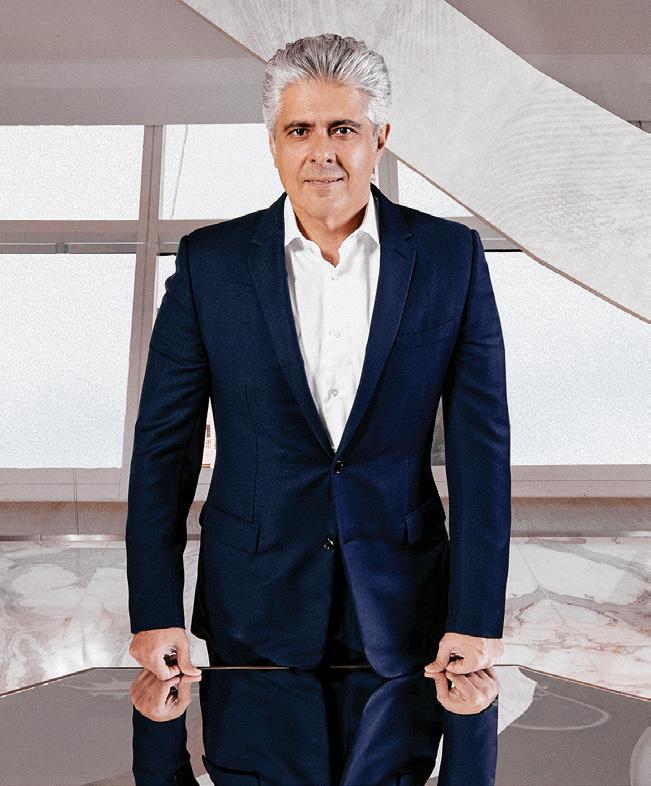
EEG OROC Campaign, out of over 2,300 participants, and has achieved a 44 per cent waste reduction since 2020. In 2024, FIVE reduced general waste by 22 per cent compared to 2023 and recycled over 590 tonnes of waste and has planted over 120 native trees in UAE bee reserves.
FIVE fosters equitable wealth distribution by including 270 employees as shareholders, ensuring shared success across all levels of the organisation. Through FIVE’s longterm incentive plan (LTIP), valued at $91.6m, eligible employees – from entry-level to leadership – are invited to participate in a discretionary programme designed to recognise performance and foster long-term value creation.
FIVE’s green portfolio, valued at Dhs13bn, is a cornerstone of Dubai’s net zero future. Through a $350m Green Bond, FIVE acquired The Pacha Group, scaling its global sustainable entertainment ecosystem and driving sustainable development through innovative investments.
FIVE offers 1,571 environmentally sustainable LEED Platinum hotel rooms, five times more than the entire US’ 295 (LEEDv4+). Pacha Hotel is the first and only hotel in Ibiza to earn LEED Platinum, with Destino Five Ibiza and Pacha Ibiza on track to achieve LEED Gold or higher. Furthermore, FIVE Zurich was Switzerland’s first LEED Platinum hotel, while FIVE LUXE in Dubai holds the world’s highest score for five-star hotels under LEED v4 BD+C.
Through a $350m Green Bond, FIVE acquired The Pacha Group, scaling its global sustainable entertainment ecosystem and driving sustainable development through innovative investments.

As the Italian brand celebrates its golden anniversary, CEO Giuseppe Santoni shares insights on craftsmanship, innovation, sustainability and global expansion p.54


Oakley and Meta recently launched the Oakley Meta Vanguard. The new line of performance AI glasses blends a bold design with cutting-edge AI for athletes. Built for high-intensity sports, these glasses offer seamless fitness app integration (Strava, Garmin), real-time performance insights, a handsfree 12MP POV camera with 3K resolution, and immersive audio with a five-microphone array. With Oakley’s PRIZM lenses, a three-point fit, and IP67 resistance, they ensure durability and clarity. They are available in four colour combos.

AS SANTONI MARKS ITS GOLDEN ANNIVERSARY, CEO GIUSEPPE SANTONI REFLECTS ON FIVE DECADES OF CRAFTSMANSHIP, EVOLUTION, AND SHAPING LUXURY’S NEXT CHAPTER
BY NEESHA SALIAN
As Santoni celebrates its golden anniversary in 2025, the Italian luxury house reflects on five decades of artistry and evolution. What began in 1975 as Andrea Santoni’s small footwear atelier in Corridonia has grown into a global name in luxury, today led with vision by his son, Giuseppe Santoni. From meticulously hand-finished shoes crafted in the heart of Italy to a presence in some of the world’s most dynamic fashion capitals, the brand’s journey has been one of patience, precision, and ambition. The Middle East has emerged as one of Santoni’s
strongest markets, with boutiques in Dubai and Kuwait already established and a new flagship store soon to open in Doha. This expansion underscores the brand’s ability to balance its heritage of craftsmanship with a forward-looking approach to design, technology, and sustainability. As Santoni steps into its next chapter, the company continues to embody a philosophy where tradition and innovation are not opposing forces, but partners shaping the future of luxury.
Here, we speak to Giuseppe Santoni about the brand’s 50-year journey, the lessons inherited from his father, the evolving role of craftsmanship in a digital era, and
how Santoni is redefining luxury for a new generation of discerning clients.
Looking back at 50 years of Santoni, how would you describe the brand’s journey from your father Andrea’s small atelier in Corridonia to becoming a global name in luxury?
Looking back at 50 years of Santoni, I see a long journey – one filled with immense satisfaction. We grew step by step, piece by piece, always staying true to our values and our roots in Corridonia. What we have today is not just a brand, but the result of years of dedication, craftsmanship, and passion.

“As our brand evolved, we noticed that more and more women were drawn to Santoni—not just for the craftsmanship, but for the unique blend of elegance and ease we offer. Today’s woman is looking for comfort, but she doesn’t want to compromise on femininity.”
It’s a creation that has evolved over time, shaped by the hands of those who believed in excellence and beauty.
Santoni has always been synonymous with craftsmanship and artisanship. How do you balance preserving traditional techniques while integrating innovation and modern design?
At Santoni, we believe that craftsmanship and technology must go hand in hand—each enhancing the other. While we embrace innovation, the soul of our brand remains rooted in preserving our savoir-faire and passing it on to the next generation of artisans. My father, Andrea, always championed the idea of industrialising the artisan process without compromising on quality, design, or attention to detail. Since 1975, our production has been deeply anchored in craftsmanship, with our artisans playing a vital role in bringing every creation to life – whether traditional or forward-thinking. Our philosophy blends heritage with technological advancement, allowing us to meet modern challenges while staying true to our identity. We continue to handcraft each product in-house, while also investing in digitalisation and consumer-focused innovation to remain competitive globally. Santoni reinterprets timeless designs, transforming classic staples into sophisticated,

contemporary pieces that resonate with our refined clientele.
Your brand was historically associated with men’s footwear, but it has been gaining popularity among women. How has this shift shaped your collections and overall identity?
As our brand evolved, we noticed that more and more women were drawn to Santoni – not just for the craftsmanship, but for the unique blend of elegance and ease we offer. Today’s woman is looking for comfort, but she doesn’t want to compromise on femininity. This insight has deeply influenced our collections.
We’ve embraced softer lines, lighter constructions, and refined silhouettes that celebrate both beauty and wearability.
Santoni has celebrated collaborations with names like IWC Schaffhausen, Mercedes AMG, and now BMW Italia. What role do such partnerships play in defining your vision for luxury today?
I strongly believe in the power of collaboration. Partnering with a brand from a different sector — when aligned with your core values and philosophy — opens up remarkable opportunities for shared growth. These kinds of partnerships not only expand your perspective but also deepen your experience and enrich your knowledge.
Sustainability has become central in luxury. With your eco-friendly Corridonia headquarters and focus on responsible production, how is Santoni rethinking luxury in an environmentally conscious era?
Our Corridonia HQ was designed with sustainability at its heart, perfectly embodying our vision for the future of luxury fashion. At Santoni, we believe that true luxury is the balance between heritage and innovation— preserving the artisanal craftsmanship that defines our identity while adopting advanced technologies that improve efficiency, minimise waste, and safeguard the environment. For us, sustainability is not a passing trend; it is a responsibility and a cornerstone for the long-term health of our industry.



This philosophy shapes every step of our work. We rely on water-based glues and dyes, reducing the use of chemicals. Our leather is carefully sourced from food industry. To further support renewable energy, we have installed solar panels at our headquarters, cutting our dependency on non-renewable resources.
Every pair of Santoni shoes is created to last, a principle deeply rooted in our craftsmanship. For the models built with Goodyear construction, durability goes even further; they can be resoled, extending their lifespan and ensuring that they accompany our clients for many years.
You’ve described Santoni as a marriage of tradition and innovation. What does

“authenticity” mean to you and how does it translate into your designs? Authenticity, for Santoni, means being true to who we are – faithful to our roots, our values, and the craftsmanship that has defined our brand since the very beginning. When I speak about authenticity, I don’t simply mean ‘Made in Italy’. For us, it goes deeper: it is ‘Made in Santoni’. Every product that leaves our atelier carries within it the soul of our artisans, their passion, their knowledge, and their touch. ‘Made in Santoni’ is our seal of authenticity.
The Middle East is becoming an important market for luxury fashion. Tell us about Santoni’s expansion in the region, particularly in Kuwait, Saudi Arabia, and Qatar, and how you see customer tastes here evolving. The region is one of our strongest markets, with a solid presence in Dubai and Kuwait and an exciting new opening soon in Doha, where our creations continue to reach a wide and discerning clientele.
As you mark this 50th anniversary, what do you see as the biggest opportunities and challenges for Santoni in the next decade?
As we celebrate our 50th anniversary, I see
both exciting opportunities and meaningful challenges ahead. Looking forward, my ambition is to continue expanding the business while remaining deeply anchored in our roots – those values of exceptional quality and artistry that have defined Santoni since the very beginning. My ultimate goal is for Santoni to flourish further in the luxury world, strengthening its position as one of the most iconic and respected brands worldwide.
On a personal note, you’ve been described as a lover of speed, rare things, and refined design. How do your personal passions influence the direction of the brand?
I guess it’s fair to say that my passions: speed, rare objects, and refined design naturally influence how I approach the brand. Speed, to me, is all about precision and performance, and that mindset pushes us to keep innovating and refining what we do. I’ve always been drawn to rare things because they have character and uniqueness, qualities I try to bring into our products. And when it comes to design, I really believe elegance lives in the details. These interests shape how I see things and therefore the creative direction I bring to Santoni.

is the global stage for women ready to redefine success
Mila Smart Semeshkina, founder of the Women’s Empowerment Council and the WE Convention, shares how the upcoming event will transform careers and advance women’s leadership in the Middle East
If a reader can attend only one event this year, why must it be WE Convention Dubai? And what’s the one-line promise they can’t get anywhere else?
If you are a woman looking to build a powerful career, then the WE Convention in Dubai is the one event you cannot miss. In just two days, you will gain concentrated, practical insights for your career from more than one hundred global leaders, including top executives from Microsoft, Meta, Estée Lauder, Kraft Heinz, Oracle, and LinkedIn. You will hear directly from women who have built legendary careers and fortunes, and you will join a community of peers and mentors who will inspire and support you. Alongside the knowledge and networking, you also have a chance to join an unforgettable WE Night, which has already become Dubai’s must-attend event among many celebrities.
What concrete wins should attendees leave with in 48 hours? And in the 90 days after?
Within 48 hours, you will receive a wealth of useful information and advice from some of the world’s most influential women. Global icons such as Anna Wintour and Candace Bushnell will share
Within 48 hours, you will receive a wealth of useful information and advice from some of the world’s most influential women.”
their experience, alongside entrepreneurs and business leaders who built their success from the ground up. You will also take part in mentoring sessions designed to provide practical strategies you can apply immediately. Within 90 days, as these insights take root, you will have a clearer vision of how to move forward, whether that means reshaping your career, accelerating your business, or making a decisive breakthrough. We conducted a poll after the WE Convention 2024, and the numbers speak for themselves – 90 per cent of last year’s participants said that they would eagerly join our next event, and 24 per cent said that the WE Convention was a breakthrough point in their career.
Anna Wintour and Candace Bushnell are headlining this year. Why is it vital for women here to hear from them firsthand?
These two women are cultural legends. Anna Wintour has shaped modern fashion as we know it by championing talents such as Alexander McQueen, Tom Ford, and John Galliano, and by transforming fashion into a global business of influence and creativity. Candace Bushnell gave women around the world the freedom to define their own lives through her groundbreaking novel and TV series, which inspired hundreds of millions. Few individuals have had such a profound impact on how women see themselves and their possibilities. To hear from them in person, especially since Anna Wintour
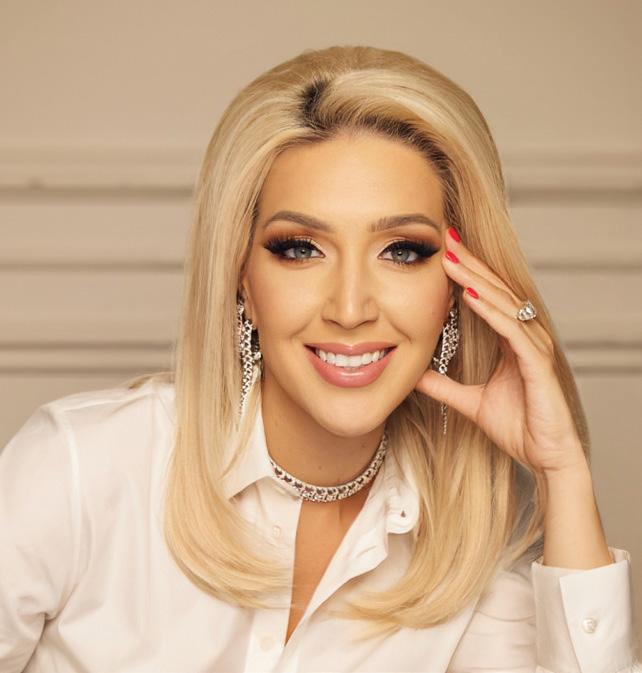
rarely speaks publicly and it took long negotiations to bring her to Dubai, is a once-in-a-lifetime opportunity.
How does the WE Convention advance women’s economic power in the GCC right now, not in theory but in practice?
The WE Convention equips women with the right information at the right moment and connects them with a network of support. Attendees gain new motivation, new perspectives on their potential, and practical knowledge to scale their businesses or careers. Many women return year after year because the WE Convention recharges them with energy and vision that translates into real action, whether that means launching new ventures, expanding existing businesses, or building stronger leadership paths. This tangible impact is why the event grows in scale and influence each year.
The WE Convention is the signature event of the WE Council. What’s next for the WE Council, year-round?
We have ambitious plans ahead. This year we are introducing the WE Awards as part of the Convention. Beyond the annual gathering, we are expanding our media presence with a dedicated journal and planning multiple large-scale events next year. Our goal is to grow from two thousand participants today to much larger audiences in the future, and more importantly, to create initiatives that directly help women launch, accelerate, and scale their businesses.
Gulf Business supports women’s empowerment and is a media partner of the WE Convention 2025. Our readers can purchase tickets for the WE Convention 2025 with our partner discount using the link in the Events section on gulfbusiness.com.

COFOUNDERS KARAN SINGH AHLUWALIA AND VAIBHAV SINGH BUILT LUXURY FOR YOU TO CONNECT THE GULF’S ONLINE LUXURY MARKET, COMBINING GLOBAL ACCESS, AUTHENTICITY, AND BOUTIQUE-STYLE
BY NEESHA SALIAN
Tell us about yourselves. What inspired you to start the business?
We have complementary strengths, ranging from financial consulting to ecommerce. The GCC is luxury’s next growth engine, but the online experience lags: limited allocations, inflated prices, surprise duties, and poor after-sales service. Luxury For You bridges this gap, offering Gulf shoppers direct access to a global assortment at insider prices, NFC-verified, duty-paid, and personal. Members enjoy a boutique experience online and offline via WhatsApp stylists and our appointment-only Dubai Experience Centre, building trust digitalonly players can’t match.
Talk us through your business model and what makes it unique. Luxury For You is a global members-only luxury club. Membership is free for now, and members join as ‘Insiders’ unlocking pricing about 15 per cent below retail. We run an asset-light, negative working capital, on-demand sourcing model. Instead of holding inventory, we partner directly with authorised European distributors, giving access to over 1,200 designer brands without stock risk. Our catalogue is not limited to MENA products. Instead, it is a Global Edit, including US and Asian market pieces

rarely seen in the region, shipped directly from Italy. Every item also carries an NFC tag for instant authenticity verification.
Our Downtown Dubai Experience Centre bridges digital and physical shopping, offering private appointments to view marquee pieces or concierge sourcing for rare items like Hermès Birkins. Through our ‘Insider Exchange’ programme, members can even resell purchases back through Luxury For You with white-glove service, fueling a circular economy that expands our catalogue without holding inventory. By combining exclusivity, value, VIP service, and authenticity, we’ve redefined the luxury shopping experience.
What market segments do you serve and why is your business a perfect fit for the region?
We serve GCC luxury shoppers who demand exclusivity, personal service, and value. Our members range from fashion-savvy young customers to veteran collectors across the region. The Gulf is an ideal market because luxury spending here is high and growing, but online shopping is still underdeveloped – only about 13 per cent of UAE luxury sales are online, leaving a big gap we’re now filling. We let clients shop global designer collections from home with the VIP treatment and trust they expect. And because trust is paramount, our NFC-verified authenticity and local Dubai presence give shoppers extra peace of mind.
Our biggest challenge was building the supply chain from scratch. We had to convince legacy European distributors – some with over 50 years of heritage – to partner with a new Dubai startup. Since we couldn’t plug into existing systems, we built live API integrations for real-time stock feeds and order routing, confirming availability in seconds. Managing cross-border logistics was equally complex: pickups across Italy, duty-paid shipping to the GCC, and chain-of-custody tracking, all secured with NFC authentication. To make this work, we developed custom systems to manage global complexity while keeping the customer experience seamless. The result: we modernised European luxury distribution into a global network that had never existed before.
What are your growth plans?
With our UAE launch done, the next step is regional expansion. Saudi Arabia, Qatar, and Kuwait are at the top of our list; we want to set up our Experience Centres in these countries first and then expand globally. We’re also preparing to introduce premium membership tiers beyond the free Insider – think Gold or Privé – memberships with perks like faster shipping, early access to new collections, personal stylists, and exclusive events. Ultimately, we see Luxury For You growing from a Dubai startup into a pan-Gulf (and eventually global) platform wherever luxury shoppers seek what we offer.

CEO AND CREATIVE DIRECTOR RICCARDO PERUFFO REVEALS HOW PESERICO BLENDS ITALIAN HERITAGE, CONTEMPORARY DESIGN AND SUBTLE ELEGANCE FOR ITS CLIENTS IN THE GULF AND BEYOND
BY NEESHA SALIAN
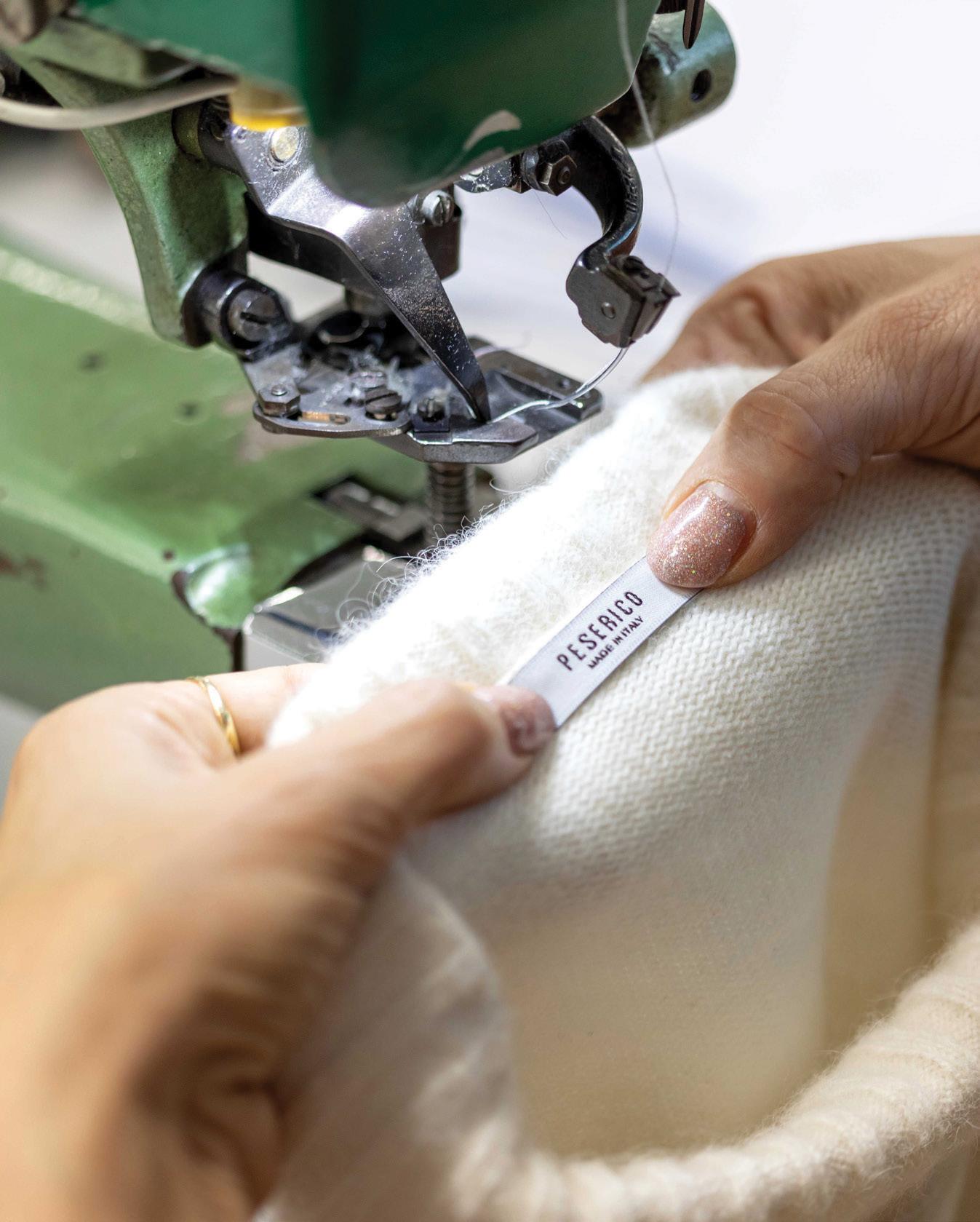
In the northern Italian town of Cornedo Vicentino, which is closely linked to the high tailoring tradition of the Veneto region, the story of Peserico began more than half a century ago. What started as a small tailoring workshop founded by Maria Peserico and her husband Giuseppe Peruffo has become a global fashion house, renowned for its refined tailoring, fluid silhouettes and its particular brand of “quiet luxury”.
Today, the helm of the brand rests with their son, Riccardo Peruffo, who is both CEO and creative director. He, alongside his wife, Paola Gonella, continues to build on that legacy. Together, they’ve shaped Peserico into a label that bridges past and present, heritage and modernity, artistry and business strategy. The result is a vision of Italian craftsmanship that resonates with women
and men around the world, from Madison Avenue to Dubai Mall.
“My mother, Maria, was an expert seamstress whose meticulous attention to detail laid the foundation for everything we do,” Peruffo reflects. “That tailoring expertise remains at the core of our brand today. As we’ve grown, I’ve worked to carry those founding values forward – Italian quality, the precision of fit, and a thoughtful selection of materials – while also evolving our collections to reflect contemporary tastes.”
Peserico’s heritage is one of understated sophistication. Long before “quiet luxury” became a buzzword in fashion, the brand was already refining the codes of discretion and elegance. Its palette of soft neutrals, subtle hues, and clean lines speaks to a

client who seeks confidence without ostentation. For Peruffo, this ethos is inseparable from the Italian sensibility. “Our goal is to create garments that express both elegance and comfort – pieces that offer a sense of well-being and refined exclusivity. Whether for everyday wear or special occasions, our collections are designed to support and elevate lives with sophistication and ease.”
His words are borne out in the garments themselves: lightweight fabrics tailored into flowing trousers, dresses that skim rather than cling, and separates that move with ease through workdays, evenings, and travel. It is luxury without logos, sophistication without shouting –a philosophy that has earned Peserico a loyal following across continents.
If heritage is the soul of Peserico, then craftsmanship is its heartbeat. Peruffo is deeply committed to preserving Italian artisanal know-how, even as the fashion industry accelerates toward speed and scale.
“Italian craftsmanship is the heart of Peserico’s identity, and preserving this heritage is a responsibility we take seriously – especially as we engage with a new generation that values speed, innovation, and technology,” he explains.
The company has invested in advanced machinery and innovative production techniques to allow greater creativity in design without compromising quality. Yet, equally important, it fosters apprenticeships and
training programmes that ensure traditional skills are passed down. “We actively involve younger generations through internships and training programmes, creating a dynamic environment where traditional skills are preserved and reinterpreted through a contemporary lens.”
In an era of fast fashion, where efficiency often trumps excellence, Peruffo sees this choice as both a challenge and an opportunity. “Maintaining 100 percent Italian production in a market dominated by outsourcing is demanding, but it’s also our greatest strength. Authentic craftsmanship and sartorial DNA are what set us apart in a world of mass production.”
At the heart of Peserico is not only a family legacy but also a creative partnership. Peruffo shares the direction of the brand with his wife, Paola Gonella, who serves as creative director. Together, they embody the balance of artistry and strategy, vision and execution.
“Creativity is at the heart of everything we do, deeply inspired by nature and art— two themes that resonate strongly with
Paola’s artistic background and personal passion,” Peruffo says. Their headquarters, set against a breathtaking landscape of hills and valleys, is a constant source of inspiration. Architecture, art, and nature filter into the collections, infusing them with a timeless sense of harmony.
This connection to the environment is matched by their attentiveness to clients. “Direct interaction, especially in our physical stores, allows us to truly understand needs, desires, and expectations. That face-to-face connection shapes a business approach that remains responsive to the evolving world around us.”
For Gonella, design extends beyond garments. She curates the entire universe of Peserico, from the look and feel of boutiques to the aesthetics of advertising campaigns. Each season, she writes what she calls “a new chapter” in Peserico’s story, keeping it rooted in tradition yet always evolving.
Nowhere has Peserico’s philosophy of quiet luxury found more resonance than in the Middle East. With boutiques in Dubai and across the region, the brand has tapped

into a cosmopolitan clientele that values authenticity, comfort, and understated sophistication.
“In the Middle East, we meet a clientele that values authenticity and truly appreciates the excellence of Made in Italy,” says Peruffo. “They are drawn to Peserico because it embodies quiet luxury – refined, understated, and timeless.”
Lightweight fabrics and fluid shapes ensure the collections remain comfortable in warm climates while retaining elegance. “By using breathable fabrics and versatile silhouettes, we ensure comfort without compromising sophistication,” he adds.
For women and men in the UAE, Peserico offers what Peruffo calls “confidence without ostentation.” In a landscape filled with bold statements and visible luxury, his brand stands apart by leaning into discretion and refinement.
From Cornedo Vicentino to New York, Peserico has steadily expanded its presence in international markets. Recent boutiques in Boston and on Madison Avenue speak to the brand’s selective retail strategy.
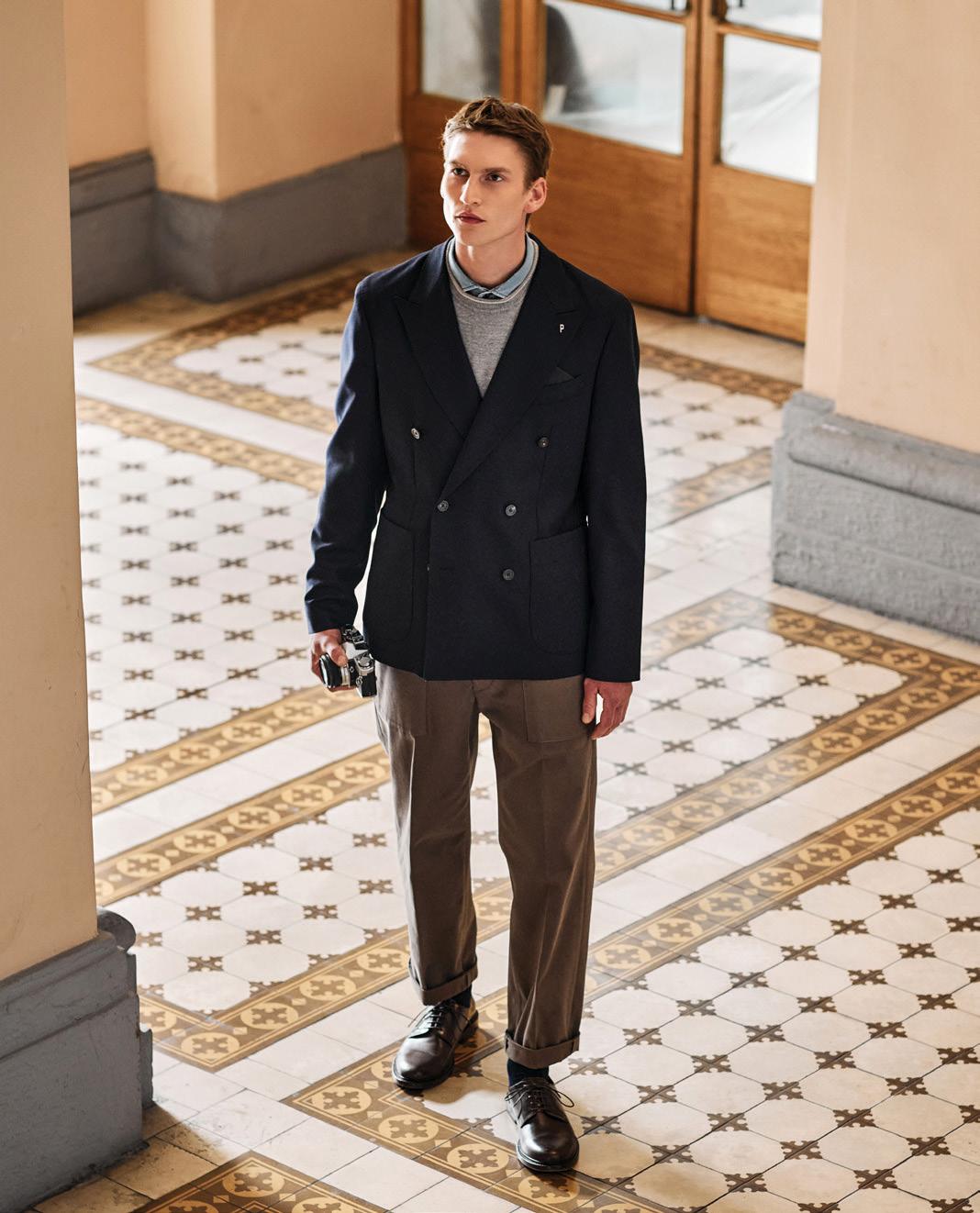
“We choose to position ourselves in elite, exclusive destinations that are key hubs of international tourism,” Peruffo explains. “Our customer is a global traveller – whether for business or leisure – and we aim to be present in the places they frequent most.” This approach allows the brand to nurture long-term relationships with clients. Alongside physical expansion, Peserico is investing heavily in e-commerce, ensuring that the digital shopping experience mirrors the same quality and craftsmanship as stepping into one of its boutiques.
The strategy is deliberate: not to chase ubiquity, but to reinforce the brand’s presence in the world’s most prestigious luxury markets.
Peserico’s latest collection, titled ‘Future Memory’, embodies the brand’s ability to weave heritage into contemporary design. Inspired by Lee Miller – the revolutionary photographer and model of the 20th century – the collection channels courage, empathy, and artistic vision.
“Like a photograph, a garment speaks about us, our experiences, and our identity. Each piece is like a snapshot, preserving a moment in time,” Peruffo explains.
The colour palette reflects this dialogue between past and present: clay green, ivory yellow, and amber beige sit alongside blush and rust red, contrasted with ebony brown and deep sapphire. Each hue is designed to capture the memory of elegance while looking toward the future.
For Peruffo, sustainability and craftsmanship are inseparable. “The concept that best expresses sustainability at Peserico is undoubtedly ‘Made in Italy,’” he says. All of the brand’s collections are produced locally, under Italy’s stringent standards for environmental and labour practices.

“LIKE A PHOTOGRAPH, A GARMENT SPEAKS ABOUT US, OUR EXPERIENCES, AND OUR IDENTITY.”

This decision ensures quality control but also reflects a deeper value system. By keeping production close to home, Peserico integrates sustainability and authenticity into every stage of the process. Investments in research and development further allow the brand to experiment with new materials and techniques while respecting heritage.
“Our goal for the future is to ensure that new generations inherit the integrity of our identity, the ability to innovate while remaining true to values, and the ambition to look beyond borders without forgetting origins,” Peruffo notes.
When asked what excites him most about the future of Peserico, Peruffo’s answer blends ambition with conviction. “On a personal level, what excites me most is the opportunity to further elevate the brand’s perception and establish it as one of the leading names in Italian luxury,” he says.
With a strong identity rooted in craftsmanship and timeless elegance, he believes
Peserico is poised for greater global recognition. “The world is increasingly drawn to brands that embody authenticity, refined luxury, and integrity. Peserico has everything it takes to play a leading role in this scenario.”
In many ways, Peserico’s journey mirrors its philosophy: steady, deliberate, and quietly powerful. From a workshop in Valdagno to boutiques in global capitals, from handsewn seams to digital innovation, the brand has remained true to its founding values while embracing change.
What sets Peserico apart is not the noise of trends, but the appeal of timelessness. In a world where fashion often clamors for attention, Peserico whispers – yet is heard all the more clearly for it.
As Riccardo Peruffo puts it, “Authenticity, craftsmanship, and quality that speaks for itself – that is the essence of Peserico.”
And in that essence lies the brand’s greatest luxury: the ability to endure.

Developments has officially launched
Aqua Maya, an ultraluxury waterfront property, located on the iconic Al Marjan Island in Ras Al Khaimah.
The project features two elegant towers housing 99 exclusive residences and one boutique retail space. The homes are thoughtfully designed to balance openness, privacy, and oceanfront serenity with a suite of resort-style amenities, including a world-class café, mini theatre, clubhouse, sunlit pool, and state-of-theart gymnasium.
Set to be a standout in Al Marjan Island’s rapidly growing luxury real estate landscape, this low-density, ocean-facing
haven spans 120,800 sqft and brings to life a distinctive community with a resortstyle ambiance.
Ankur Aggarwal, founder and chairman, BNW Developments, said, “With Aqua Maya, we set out to create more than just homes. We envisioned a lifestyle that blends the peace of oceanfront living with the energy of a world-class destination. Al Marjan Island represents the next wave of luxury in the UAE, and we’re proud to be shaping its future. At the same time, it presents a compelling investment opportunity in a high-growth market that continues to attract global interest.”
Vivek Anand Oberoi, co-founder and MD, BNW Developments, commented, “Every space in Aqua Maya is

composed with precision and richness. We wanted homes where the sunlight waltzes through large windows, the sea breeze flows effortlessly, and the architecture disappears into the serenity of its surroundings. It’s not just about what you see, it’s about what you feel when you walk in. We believe that true luxury lies in experience and that well-designed spaces are not only beautiful to live in, but also smart investments for the future.”
Approximately 50 minutes from Dubai International Airport, BNW Aqua Maya is strategically positioned off the Ras Al Khaimah coastline, offering seamless access to the city while delivering the ease and charm of island living.
The development features connectivity to Sharjah, Khor Khwair, and Mina Al Arab. Other lifestyle destinations include Al Hamra Marina, Manar Mall, and Al Marjan Island Beach, making it one of the most coveted destinations in the region.
The project embraces the natural rhythm of its surroundings through expansive balconies, flowing interiors, and floorto-ceiling windows that allow sunlight to dance through every room.
Its low-density layout offers both openness and privacy, guided by a simple yet powerful vision: to create homes that breathe, move, and glow with the energy of the sea.
With Ras Al Khaimah emerging as a global hospitality and real estate hotspot, and developments such as the upcoming Wynn Resort Al Marjan poised to transform the emirate, Aqua Maya offers a rare opportunity for both end-users and investors. High rental demand, capital appreciation potential, and the project’s exclusivity make it one of the most promising residential investment prospects in Ras Al Khaimah and the broader UAE luxury segment.
Early market sentiment has been overwhelmingly positive. Aqua Maya has already been rated 9.7/10 by independent property analysts and ranks among the top 10 luxury residential projects in Dubai for 2025.
Homebuyers and global investors alike are showing keen interest in this rare combination of exclusivity, location, and lifestyle.
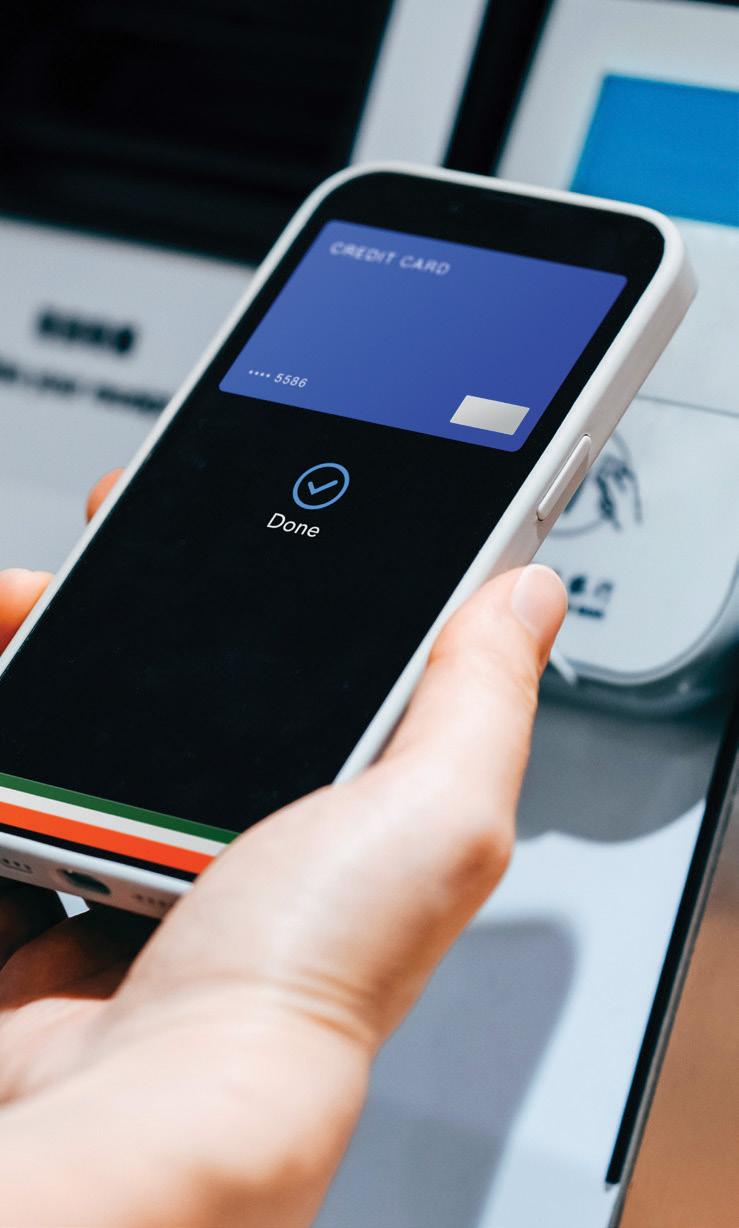

We look at how startups such as PayPal and Careem have become breeding grounds for billion-dollar founders
Think of a billion-dollar founder.
Chances are you’re imagining an individual with a singular vision and incredible drive. Both those things may be essential, but there’s much more to the story.
History has shown us that many billiondollar founders don’t work in isolation and then suddenly wow us with their brilliance. On the contrary, they emerge from ecosystems – specifically, ecosystems created by the companies where they learned the ropes.
This is why certain startups are more than just companies – they are breeding
grounds for entrepreneurs. The founders of these companies often go on to even greater heights, and so do their employees, leveraging the network they have built up as they start their own ventures.
Let’s look at two famous examples: the digital payments platform PayPal, launched in 1998, and the ride-hailing app Careem, founded in 2012. Their backstories are quite different: Careem is a private company and a unicorn that in 2023 received a $400m investment, following its acquisition by Uber for $3.1bn in 2020. PayPal is not a unicorn but is a publicly traded company with
a current approximate market capitalisation of $64.54bn.
But both companies began as startups, and in spite of their different trajectories, both became incredibly successful. The key detail is that their success went beyond just profit.
So, let’s look at how they got to that position, the ecosystems they produced, and what those founders and other alumni went on to do. Beyond that, let’s also consider the takeaways for entrepreneurs today.
THE INFAMOUS PAYPAL MAFIA
PayPal was one of the first companies to successfully solve the problem of digital payments and was acquired by eBay in 2002 for $1.5bn. From there, it became a launchpad for probably Silicon Valley’s most powerful alumni network, known as the PayPal mafia.
This is a loose network of former employees and founders. When looked at together, they played an oversized role in reshaping the global tech landscape. Most famously, Elon Musk went on to build Tesla and SpaceX and take over Twitter (re-naming it as X). Reid Hoffman would found LinkedIn, while Steve Chen, Chad Hurley, and Jawed Karim launched YouTube. Peter Thiel would co-found Palantir, among many other projects. Some less well-known alumni went on to lead major companies or become influential investors, including David Sacks (founded Yammer), Roelof Botha (later became a senior partner at Sequoia Capital), and Jeremy Stoppelman (co-founded Yelp). The list continues.
This wasn’t just coincidence. PayPal’s early culture had a strong focus on resilience and adaptability. It also prioritised technical excellence. It makes sense since the very idea of building a payments company where the variety of challenges – from fraud prevention to user acquisition to scaling infrastructure – was so complex that the people who worked there and tried to

Mohammad Bin Humaidan,
director of Free Zone Licensing, Meydan Free Zone
solve these problems gained experience far beyond their years. Those same employees then had both the confidence and capital to launch their own ventures once PayPal was acquired.
If PayPal helped shape Silicon Valley, then Careem played an equally major role in the Middle East. Founded in 2012 in Dubai by Mudassir Sheikha and Magnus Olsson, the ride-hailing app became one of the region’s first unicorns before its acquisition by Uber. But similar to PayPal, Careem’s greatest legacy may be the entrepreneurs it produced.
While Careem co-founders Mudassir Sheikha and Magnus Olsson are still leading the company, former Careem executives and employees are building some of the region’s most dynamic companies. Having risen to the position of regional director of Careem Bus, Hadeer Shalaby is now vice president and managing director of on-demand delivery platform talabat. Careem’s former CFO Ankur Shah went on to become the chief finance and strategy officer of Weee! and then an advisor to multiple companies, including the super app Yassir. Abdulla Elyas, who was also a co-founder of Careem, was appointed to the
board of directors of the Saudi consulting and digital solutions firm TAM.
Scaling Careem across 10 countries in the Middle East and North Africa gave its alumni an incredibly broad experience. They learned to navigate fragmented regulations across different territories while managing the incredible growth of the company. The fact that it was so complex was a factor that helped the soon-to-be entrepreneurs, as they gained a truly global outlook and took it with them into their future ventures.
So, what makes certain startups become effective breeding grounds for future founders? A few key factors stand out:
HIGH-STAKES: The problems that companies like PayPal and Careem were solving were very complex and multi-layered. Employees were forced to learn quickly and think creatively.
CULTURE: Both companies created cultures of ownership and risk-taking – the latter has to be in place for a startup to be successful. Employees were encouraged to challenge norms and find new paths – and the proof of this is in the products both companies produced.
CAPITAL: Success stories attract investors. Alumni from successful startups often combine personal capital from exits with a level of credibility that helps open doors.
NETWORKS: The alumni networks of PayPal and Careem function almost like exclusive clubs. Founders help each other, share knowledge, and invest in each other’s companies.
For entrepreneurs, the lesson is clear. If you embed yourself in an ambitious company at the right stage, you will gain first-hand experience of the challenges involved.
It will be intense, but the amount you will learn in a short amount of time, along with the network you will build, will increase your chances of accessing capital later.
For investors, it’s about tracking where entrepreneurial talent goes next once a successful exit has happened. The alumni networks created by the likes of PayPal, Careem, and others may drive the next wave of unicorns. Investors who recognise these patterns early will be well-positioned to back promising teams.
The UAE has been ahead of the game on this. It has established policies to encourage entrepreneurship, and through incubators, accelerators, and mentorship programmes, these have become a kind of informal university for entrepreneurs.
Rather than focusing solely on isolated unicorns, other GCC governments should follow suit and support the conditions that allow successful companies to become talent factories for the future.
The PayPal and Careem stories show that a unicorn’s real legacy isn’t just its valuation at the point of acquisition. It’s the network of talent it leaves behind. A founder who emerges from such an ecosystem doesn’t just launch a company – they inspire others to do the same.
Looking ahead, more startups around the world are likely to produce their own ‘cliques’. The Silicon Valley model can replicate itself globally: build one ambitious company, nurture talent and watch as that talent creates the next wave.
In the end, it’s these ecosystems – not the lone genius founder – that lie at the centre of billion-dollar valuations. And it’s this cycle that may well shape industries for decades to come.
Dharmendra Mehta, MD of MEA at Fynd, shares how the unified commerce platform is building momentum in the UAE while eyeing Saudi Arabia as its next frontier
BY NEESHA SALIAN
Tell me about the company and the driving force behind it.
Fynd was founded in 2012 by three IIT Mumbai graduates: Farooq Adam, Harsh Shah and Sreeraman Mohan Girija, who wanted to build something in the e-commerce stack. They identified that most companies were building either e-commerce (one warehouse shipping to customers) or retail tech (in-store point of sale systems). Fynd’s founders decided to combine these approaches into unified commerce with a modular structure, allowing clients to use specific components or the entire platform. By 2015-16, they began incorporating AI, and today they’ve evolved into an ‘autonomous commerce’ platform using AI at every stage, including for coding. The platform now enables AI for various commerce segments, from customer support chatbots to AI-designed fashion items and marketing campaigns.
As for myself, I have more than 25 years of experience, primarily in the fashion space in India with companies like Raymond, Future Group, and Flipkart. I’ve been in the region for eight-nine years, previously serving as CEO for Mumzworld, CureFit, and heading e-commerce for Lal’s Group before joining Fynd to help with community building and market expansion.
In India, we have over 1,000 employees, with about 60 per cent of them being engineers. For global expansion, we have about 100 engineers and product managers working on localisation efforts. We have a leadership team on the ground in Dubai, with a larger team that travels as needed.
We serve over 20,000 stores and more than 300 enterprise retailers globally. The company is also backed by Reliance Retail Ventures.
What makes your company unique in the market?
Unlike companies that solve one problem in depth, Fynd has solved multiple problems in depth and combined them into a platform. We offer 15 different products that retailers can take individually, as bundles, or as a complete tech stack. Our platform is now AI-native, or what we call ‘autonomous commerce’, using AI throughout the development process. We’ve compressed the fashion lifecycle from 12-18 months to just three months by enabling AI-driven design, manufacturing, and marketing.
Why did you choose Dubai for your expansion?
We chose Dubai for three main reasons: First, the government’s focus on building a digital economy, with aims to make 20 per cent of GDP come from digital sectors. Second, the ease of doing business and transparency from the government. Third, the UAE’s AI charter, being the only government with a Minister for AI and a 2031 blueprint for AI transformation. These align with our values of being at the bleeding edge of AI development. Dubai also serves as a gateway to other markets.
Where are you seeing interest for your services in Dubai, and are you targeting large enterprises or SMEs? Initial interest has come from enterprises, particularly in fashion and luxury fashion. Hugo Boss is already live with their website built on the Fynd platform. We’re also working with luxury retail watches companies, electronics retailers, and grocery chains. We’ve found traction across multiple categories in the last six months after spending the first quarter setting up infrastructure and licenses.
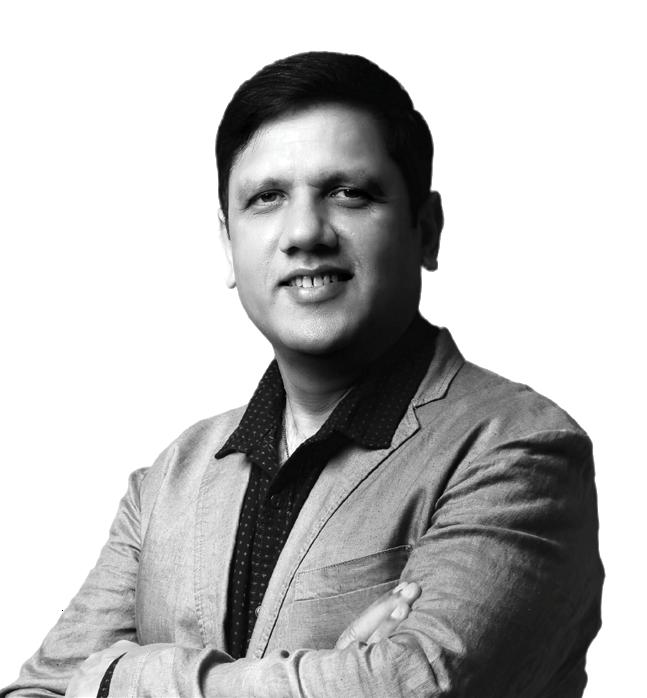
Dharmendra Mehta,
What challenges have you faced as a business, and how have you overcome them?
A major challenge is that companies in the region have already invested in vari ous technology solutions over the last decade, creating a mishmash of systems they’re reluctant to replace. Our solution is keeping our approach modular – we don’t ask clients to replace all their exist ing technology, but instead help them achieve their five-year vision by address ing specific pain points. We take a consul tative approach, meeting with leadership across roles to understand their problems and show how we can help solve them. Localisation is another challenge - we’ve learned to adapt to different markets like Kuwait, Bahrain, Saudi Arabia, and the UAE, including Arabic transliteration with 98 per cent accuracy and reactive UI/UX that shifts from left-to-right to right-toleft as needed.
What are your plans for the rest of the region, and when will we see that roll out?
We’re just starting in the UAE with a focus on gaining a large market share. Over the next six months, we’ll focus on Saudi Arabia, with 2026 dedicated to establishing a presence there over the next 12 months, including getting part nerships in place.
tinct segments: Saudi Arabia and Oman (larger populations with different behav iours) versus UAE, Kuwait, Bahrain, and Qatar (smaller economies where luxury retail and quick commerce are taking off). We also have industry-agnostic products like supply chain tools that we’ll take to Saudi Arabia.




